Valletta to Venice: An Adriatic Renaissance
Valletta | Valletta | Reggio di Calabria | Gallipoli | Bari | Dubrovnik | Split | Ancona | Ravenna | Rovinj | Venice | Venice

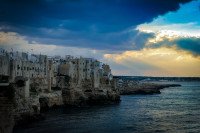
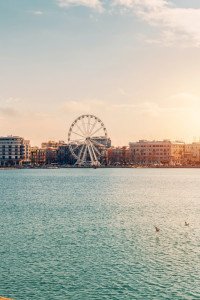
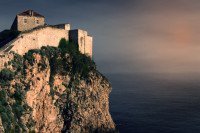
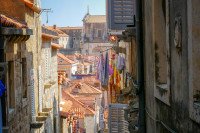
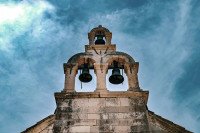
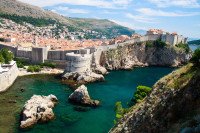
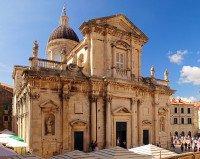
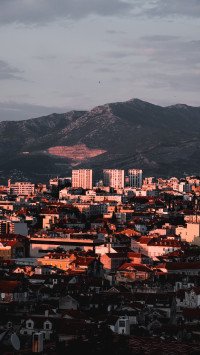
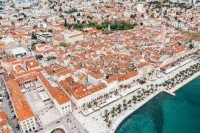


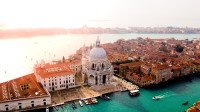
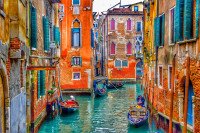
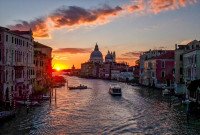
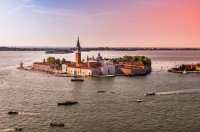
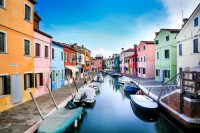

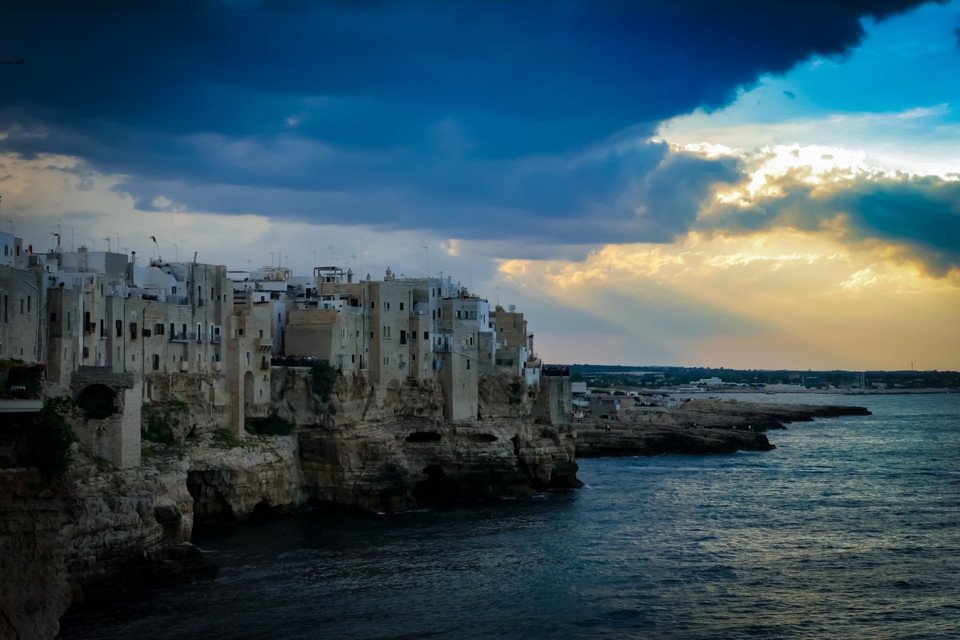

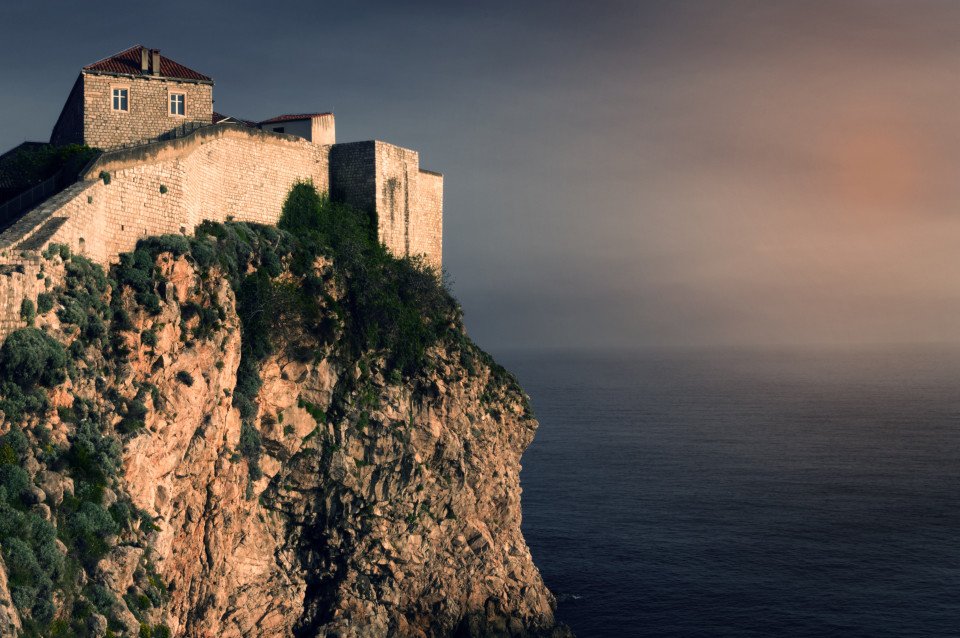
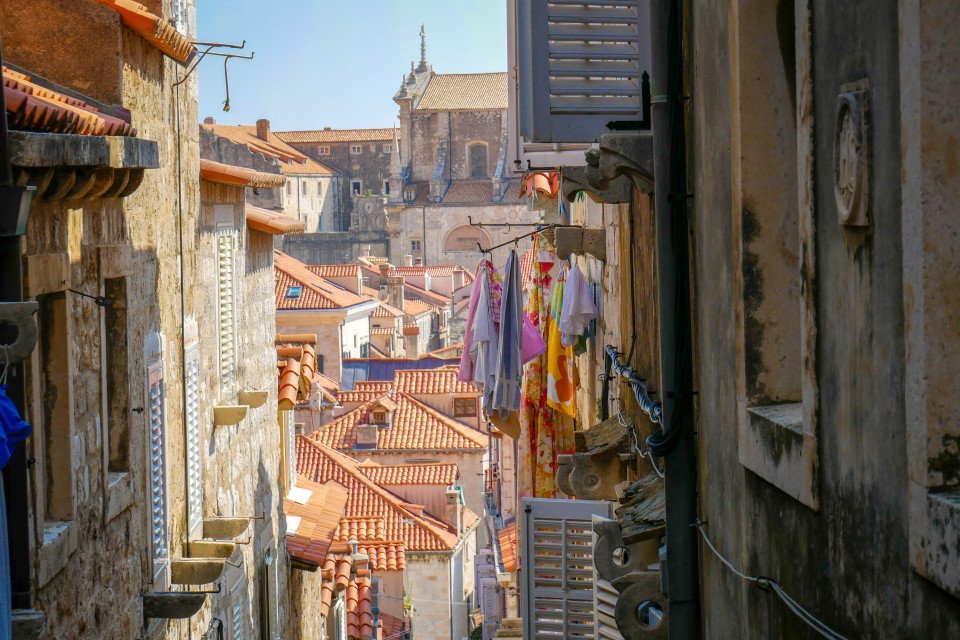
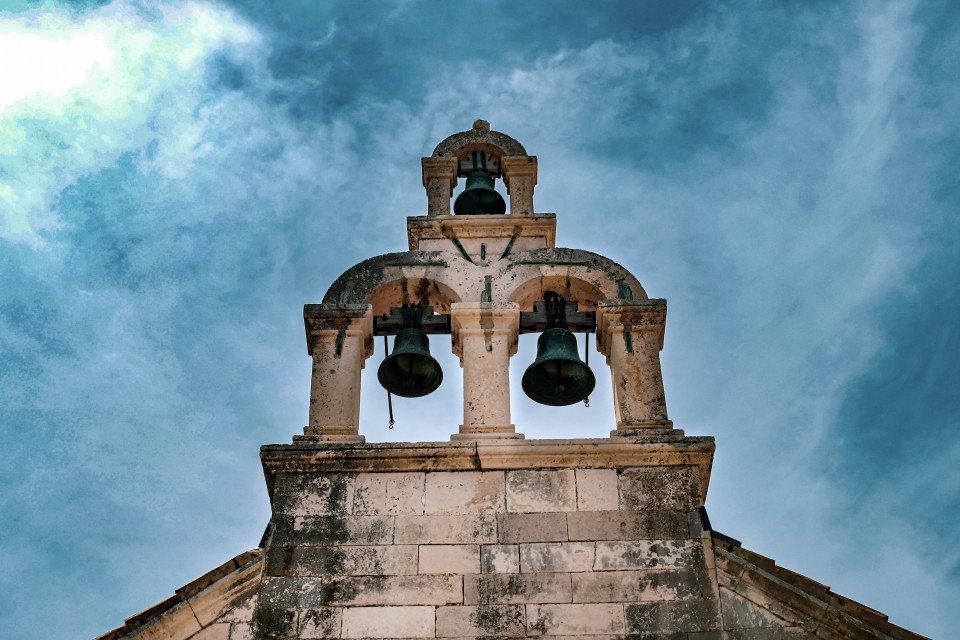
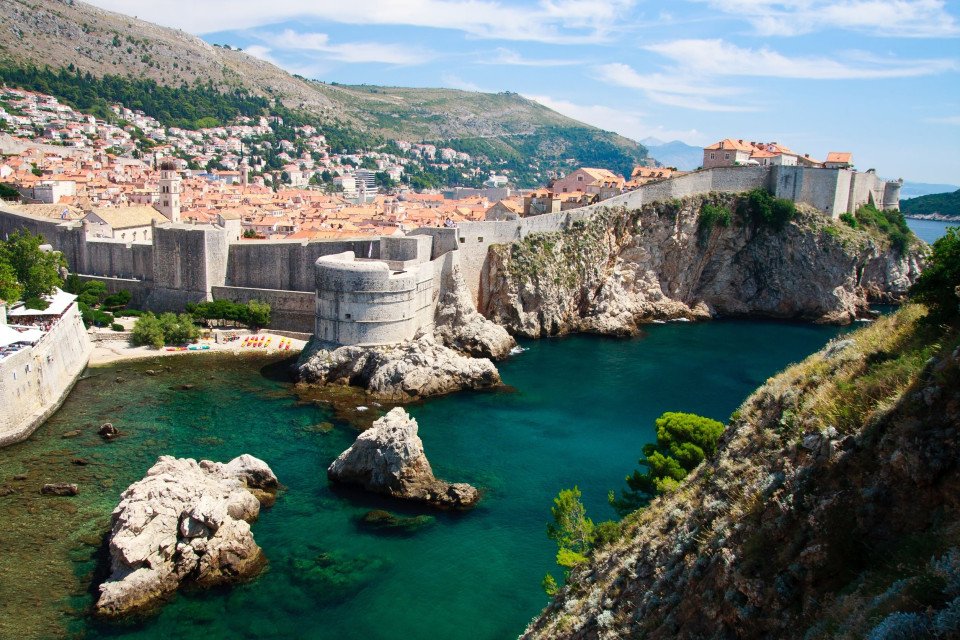
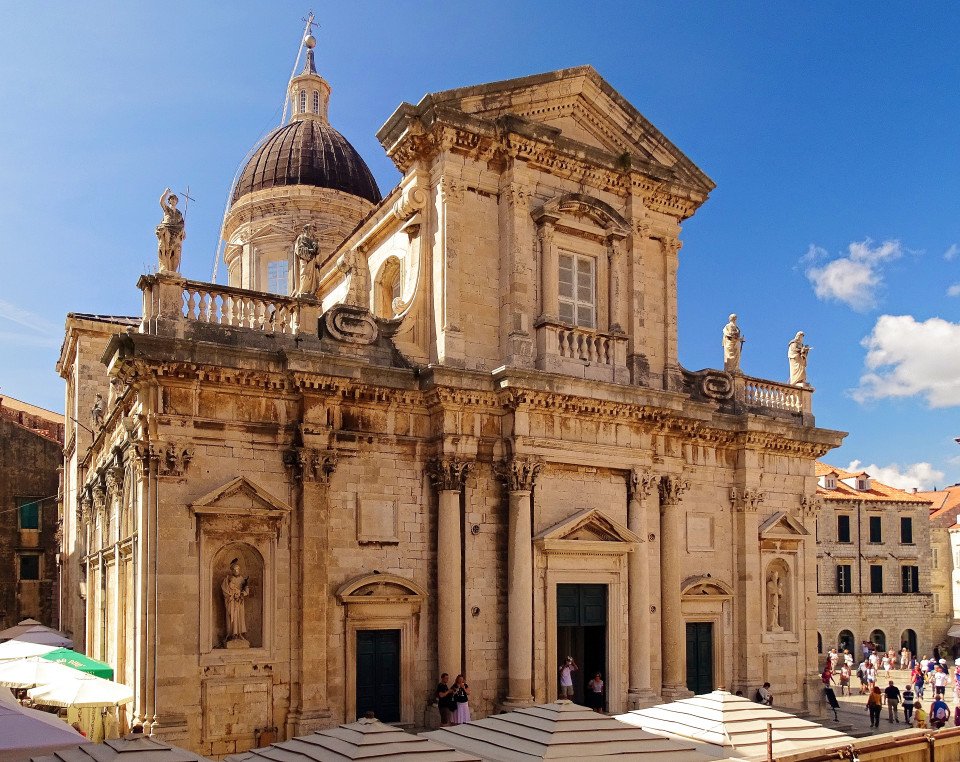
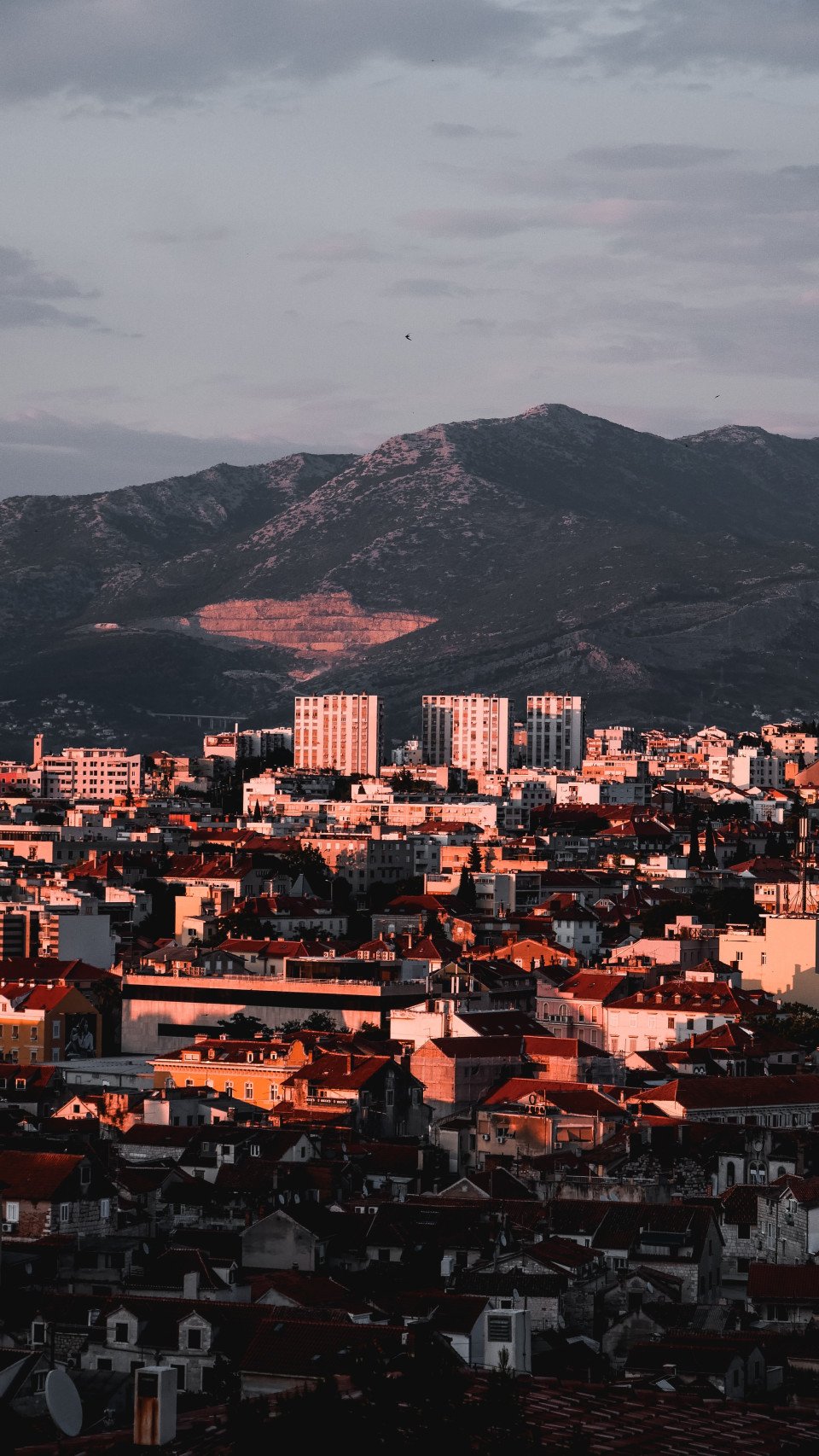
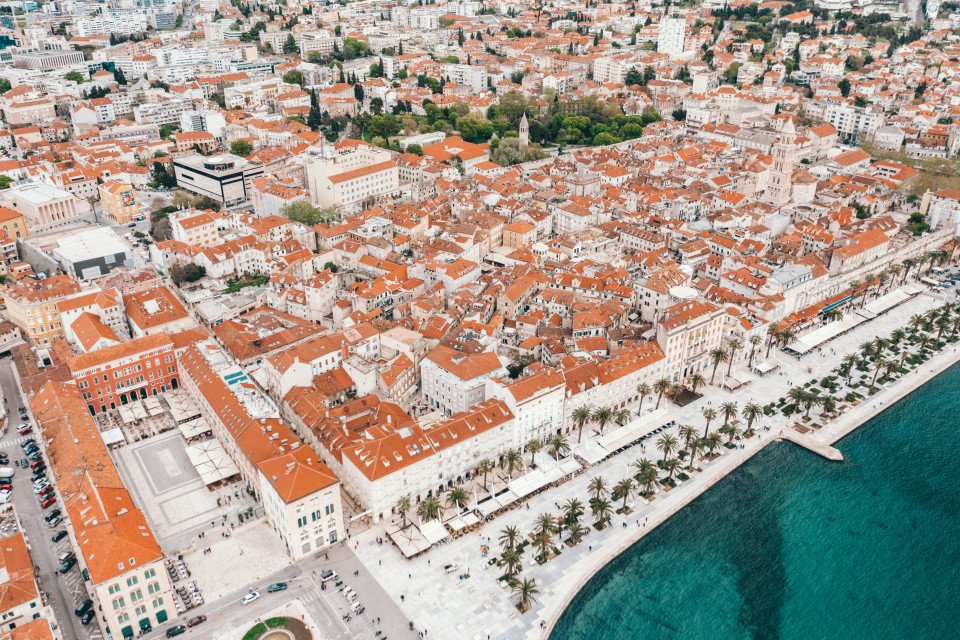


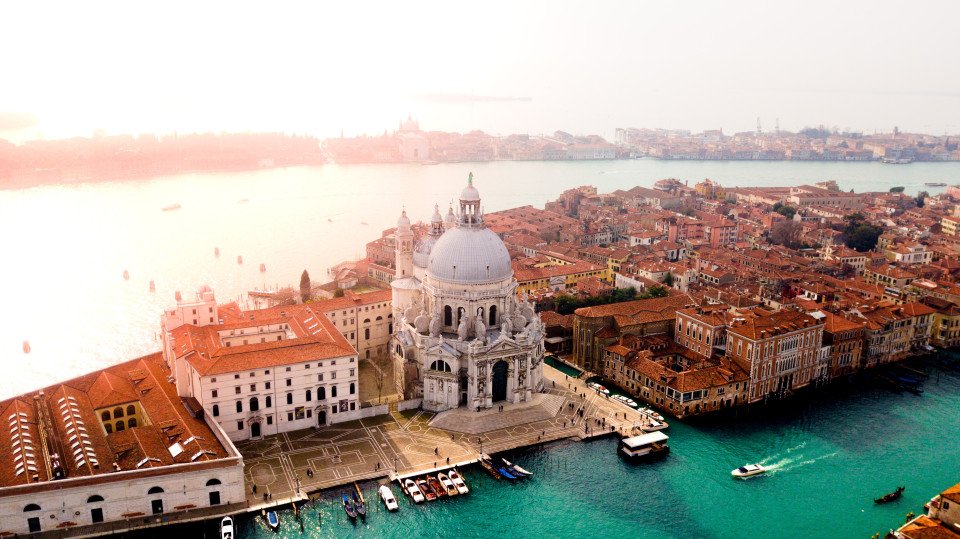
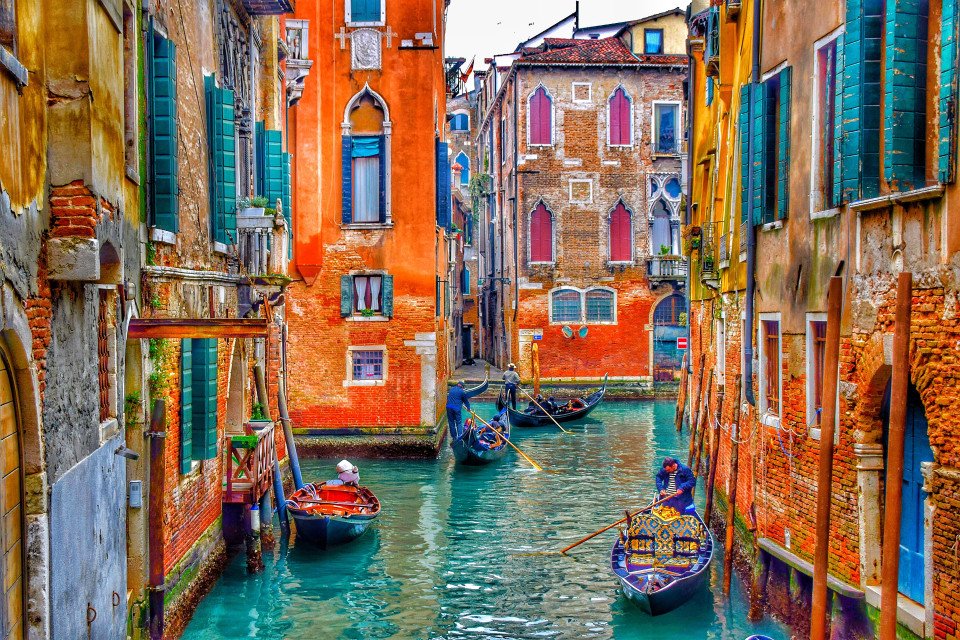
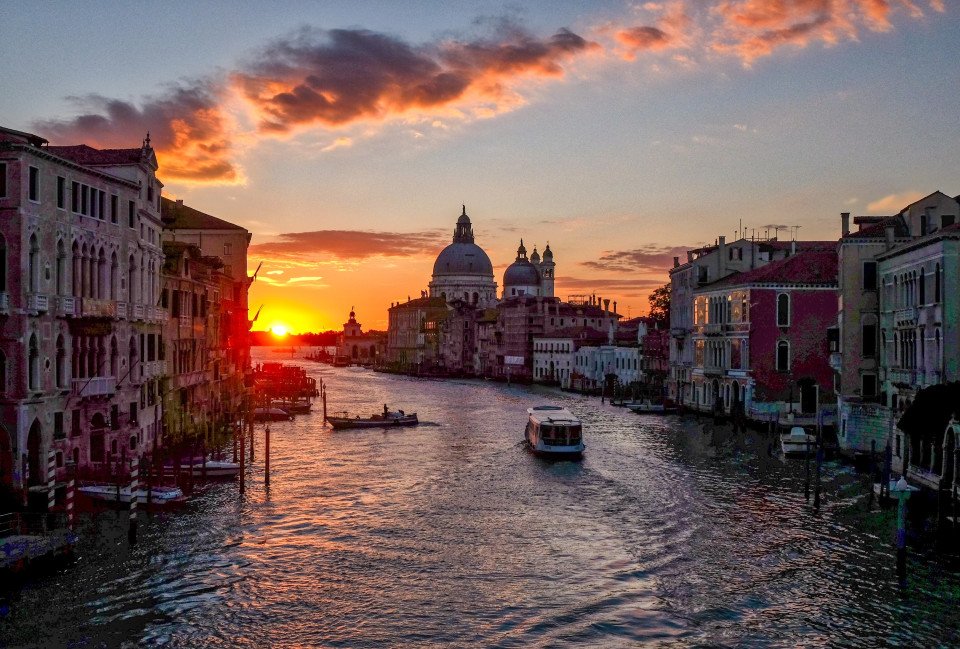
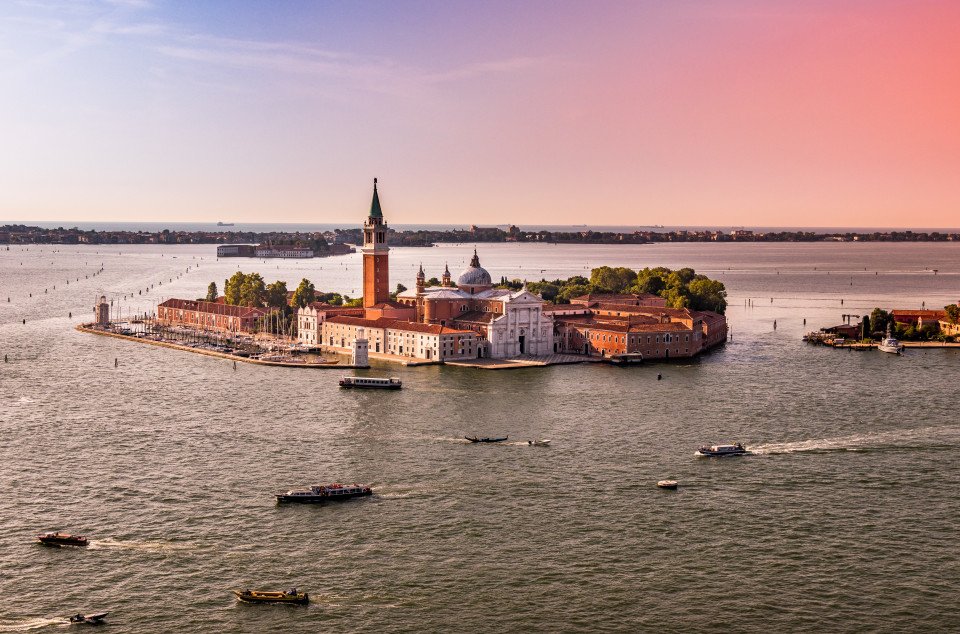
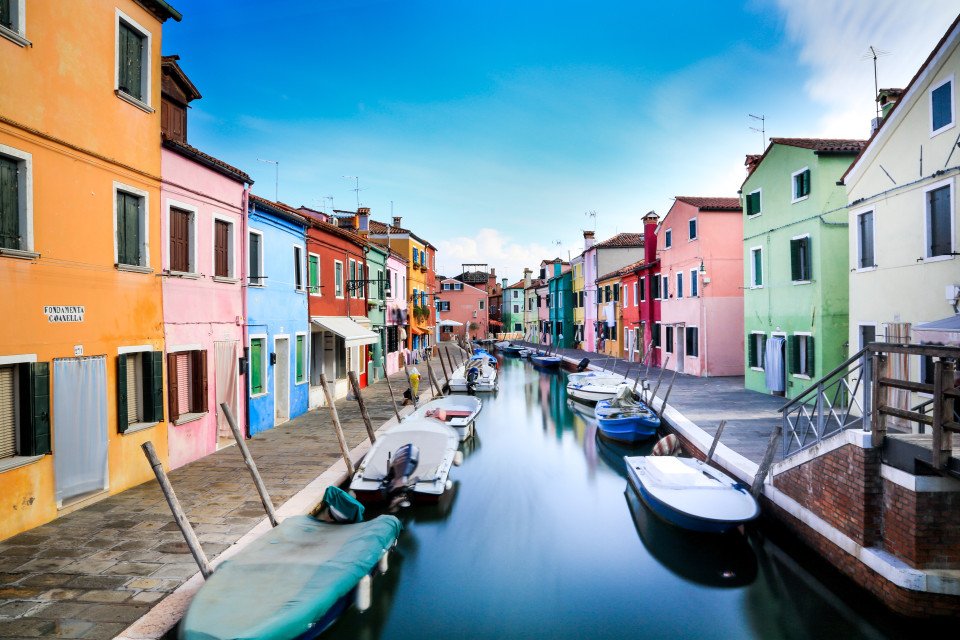
Want to add a hotel stay or change your flights?
Just call our team of cruise specialists to help build your dream cruise holiday today!
Prices based on 2 people sharing. Cruise only price does not include flights. Fly-cruise price may vary by chosen UK airport.
Prices based on 1 solo passenger. Cruise only price does not include flights. Fly-cruise price may vary by chosen UK airport.
Prices based on 3 people sharing. Cruise only price does not include flights. Fly-cruise price may vary by chosen UK airport.
Prices based on 4 people sharing. Cruise only price does not include flights. Fly-cruise price may vary by chosen UK airport.
(Prices correct as of today’s date, are updated daily, are subject to change and represent genuine availability at time of update).
Cruise only holidays are financially protected by ABTA. Fly cruise holidays are financially protected by AE Expeditions under ATOL number
Please click here to check the essential travel requirements before booking this cruise.

Valletta
Welcome to Malta. On arrival at Valletta Airport make your way to the Arrivals Hall to meet our representative, followed by a transfer to our group hotel. At the hotel, visit our hospitality desk in the lobby to meet our team who will provide you with useful information regarding pre-... Welcome to Malta. On arrival at Valletta Airport make your way to the Arrivals Hall to meet our representative, followed by a transfer to our group hotel. At the hotel, visit our hospitality desk in the lobby to meet our team who will provide you with useful information regarding pre-embarkation procedures and about your time in Valletta. You will also receive cabin tags for your luggage. Please clearly label the tags with your name and your cabin number on the ship. Today offers time to relax in preparation for our journey. Join us for a Welcome event this evening, where we honour the bravery of the Maltese people and hear wartime tales of courage against seemingly insurmountable odds, from a local expert. Accommodation: Valletta Hotel Meals: Welcome Event canapés Read More

Valletta
Sitting in the centre of the Mediterranean, Malta boasts unbeatable location, location, location. Its sunny charm and island lifestyle have made it a modern-day summer holiday destination, but historically, its strategic position has made it a target for invaders. The Maltese people,... Sitting in the centre of the Mediterranean, Malta boasts unbeatable location, location, location. Its sunny charm and island lifestyle have made it a modern-day summer holiday destination, but historically, its strategic position has made it a target for invaders. The Maltese people, known for their convivial and family-oriented nature, have a long history of defending their homeland, from ancient Greek sieges to Napoleon’s forces. Their remarkable bravery during World War II, particularly during the Second Siege of Malta, earned the nation the George Cross from King George VI. This honour is proudly displayed on the Maltese flag and coat of arms, symbolising their enduring spirit and resilience. Our day is spent in Maltas’ convivial capital, Valletta, which remains a historical city with streets of fascinating sites telling more than their fair share of stories. Our local guide tells tales of the past and present at the Barrakka Gardens where we gain a perspective of the city’s harbour from a naval point of view before exploring the Grand Masters Palace and Armoury, where we uncover an impressive collection gathered by The Knights of St John, while the multimedia show, Malta Experience, places thousands of years of Malta into perspective. There’s time after our locally guided tour to stroll the city streets before you board the Douglas Mawson and begin your voyage. This evening, enjoy a ‘Welcome Dinner’ where we meet our Aurora Expeditions team and crew. Meals: Breakfast, Dinner onboard Read More
Reggio di Calabria
Sitting in the ‘toe’ of Italy’s ‘boot’ and guarding the formidable Strait of Messina, Calabria’s former capital, Reggio di Calabria, has witnessed centuries of history. Offering views across to Sicily, just two miles away, and the formidable Mount Etna, Reggio di Calabria is home to t... Sitting in the ‘toe’ of Italy’s ‘boot’ and guarding the formidable Strait of Messina, Calabria’s former capital, Reggio di Calabria, has witnessed centuries of history. Offering views across to Sicily, just two miles away, and the formidable Mount Etna, Reggio di Calabria is home to the National Archaeological Museum, which houses the famous Riace Bronzes—life-size, ancient warrior-like Greek statues. The town boasts the Lungomare Falcomatà, a lengthy seafront promenade lined with palm trees, where locals gather for the age-old Italian evening stroll known as la passeggiata. Reggio di Calabria is also known for its historical ties to Magna Graecia, which are reflected in its classical architecture and ancient ruins. Our morning experiences offer you time to enjoy a relaxing afternoon on the ship or on shore, before we sail east to the heel of the boot late afternoon. Personalise your exploration with our included ‘Your Choice’ experiences. Option 1 – Morning experience: The Coastal Duet of Scilla and Chianalea Just 20 minutes from Reggio di Calabria, you will find the charming shores of Scilla and Chianalea. These neighbouring villages blend effortlessly, each with its own unique appeal. Chianalea, knicknamed "Little Venice," features houses clinging to the cliffs and narrow streets leading down to the clear Tyrrhenian Sea. Traditional blue fishing boats bob about in the waters, adding to its authentic character. In Scilla, you can relax on a sheltered beach perfect for swimming, bordered by cafes and restaurants. The 16th- century Ruffo Castle stands prominently on a rocky headland, housing the historic Lighthouse of Scilla. Together, Scilla and Chianalea offer a glimpse into a quieter side of Italy’s coastline and a taste of southern coastal life that most tourist never witness. Option 2 – Morning experience: The Cursed Village of Pentedattilo Perched on Monte Calvario, a half hour drive from Reggio di Calabria, Pentedattilo is a small village with a haunting history and a dramatic landscape. A separate commune until 1811, its name, meaning "five-fingered," reflects the mountain’s shape, which resembles a giant hand. This ghost town, abandoned in 1963, clings precariously to the rocky outcrops, giving it an eerie allure. Pentedattilo’s story is steeped in legend and tragedy. In 1686, a bitter feud between the Alberti and Abenavoli families culminated in the brutal slaughter of the Albertis. The village was cursed by the family, with locals claiming to see the bloody handprint of Lorenzo Alberti on the castle wall and hearing his screams in the wind. Fearing that the oversized hand-shaped rock might one day collapse on them as retribution for past crimes, and plagued by frequent earthquakes and mudslides, residents ultimately abandoned Pentedattilo. During our visit, we tour the village with a local guide, delving into tales of ghosts and wrongdoing that shroud its history. Visitors should be prepared for a steep, uphill walk from the parking area to the village. Exploration is on foot, along uneven paths and through derelict buildings, but the ramble through Pentedattilo’s abandoned lanes and phantasmal landscape is well worth the effort. Option 3 – Morning experience: Costa Viola Wine Tasting and Grappa Experience Just 30 minutes from Reggio Calabria, the vineyards of Calabria, set amidst the rugged terrain of the Costa Viola offer a unique wine tasting experience. This region, historically known as Enotria or "Land of Wine," has a rich winemaking heritage that dates to the era of ancient Greece. The vineyards, renowned for their heroic viticulture, feature steep slopes and terraced land supported by dry stone walls called armaciere. This traditional practice allows for optimal grape cultivation in the challenging topography. On visiting the winery, we will learn about this dramatic technique and taste a range of wines, from robust reds to crisp whites and refreshing rosés. Don’t miss the chance to sample Grappa dello Stretto, a local specialty. Made from carefully selected grape pomace and distilled with great care, this grappa reflects Calabria's rich history and is a beloved drink in Southern Italy, often enjoyed after meals or during social occasions. Read More
Gallipoli
Sailing the Italian coastline, we reach the region of Puglia and moor in the walled coastal town of Gallipoli around midday. This charming town acts as our gateway to the southern tip of Italy, offering an afternoon to explore its hidden treasures on one of our ‘Your Choice’ experienc... Sailing the Italian coastline, we reach the region of Puglia and moor in the walled coastal town of Gallipoli around midday. This charming town acts as our gateway to the southern tip of Italy, offering an afternoon to explore its hidden treasures on one of our ‘Your Choice’ experiences. Early evening, we set sail once more, journeying overnight around the heel of ‘the boot of Italy’ to the port town of Bari. Personalise your exploration with our included ‘Your Choice’ experiences. Option 1 – Afternoon experience: The Walled City of Gallipoli Our local guide tells tales of the past and present as we enjoy a guided walk of Gallipoli. Situated at the base of Italy’s Apulia region, this picturesque town is steeped in history and Mediterranean charm. Its unique location on a limestone island connected to the mainland by a 17th-century bridge, makes our every step appear medieval. Gallipoli’s maze of narrow streets, lined with whitewashed buildings and ancient churches, creates a true ‘old town’ appeal, while ancient wooden fishing machines, called trabucchi, are now preserved as cultural landmarks along the coast. Derived from the Greek Kallipolis, meaning ‘beautiful city,’ the town’s name reflects its stunning setting overlooking the Ionian Sea. Gallipoli fascinates with its storied past involving pirates who raided its shores during the medieval and Renaissance periods, prompting the construction of defensive fortifications like the Castello Angioino, which dominate its walls. This pirate history adds another layer to Gallipoli’s rich sense of maritime heritage, making it an intriguing destination. Option 2 – Afternoon experience: Lecce Heralded as the ‘Florence of the South’, Lecce lies around 30 minutes’ drive from Gallipoli. This impressive town played a crucial role in spreading Renaissance and baroque influences from the powerful duchies of the north to the southern peninsula. It flourished as a hub of artistic and architectural innovation, attracting scholars, artists and architects who enriched its cultural heritage. The city’s renowned baroque architecture, characterised by intricate ornamentation and the use of local golden limestone, reflects this period. The central square, Piazza Sant’Oronzo, is the beating heart of Lecce. It stands at the end of the majestic Colonna del Santo Patrono, erected by the inhabitants to express gratitude for the city’s deliverance from a devastating plague that threatened the Kingdom of Naples in the 17th century, but Lecce’s cultural vitality extends beyond its architecture. The city is renowned for its traditional festivals, lively markets and delicious cuisine. Local specialties, like rustico leccese and pasticciotto leccese, are tempting treats best enjoyed with a glass of Primitivo wine from nearby vineyards. Whether admiring its architectural wonders, savouring its culinary delights, or simply soaking in its laid-back charm, Lecce offers us a cultural fix in the heart of Puglia. Read More


Bari
Bari acts as our gateway today with a bevy of UNESCO World Heritage Sites today with Alberobello, Matera and Castel di Monte all in our sights. As the capital of Italy’s up-and-coming Puglia region, Bari is undergoing a renaissance, transforming once-neglected suburbs into colourful n... Bari acts as our gateway today with a bevy of UNESCO World Heritage Sites today with Alberobello, Matera and Castel di Monte all in our sights. As the capital of Italy’s up-and-coming Puglia region, Bari is undergoing a renaissance, transforming once-neglected suburbs into colourful neighbourhoods. The city’s bustling port has been a hub of trade and culture for centuries, showcasing its rich maritime heritage, while Bari’s charming old town, Bari Vecchia, features narrow, winding streets leading to historical sites like the Basilica di San Nicola and the imposing Norman-Swabian Castle. Famed for its orecchiette pasta, often handmade by local women right on the streets, Bari adds a personal touch to its culinary scene, with seafood a local specialty. Stories rich in legends such as that of Saint Nicholas, whose relics were brought to Bari from Myra in 1087, further enrich the city’s mystical allure as does a devotion to the 150,000 tons of olive oil produced in the region annually, which funds its ongoing facelift. Personalise your exploration with our included ‘Your Choice’ experiences. Option 1 – Morning experience: UNESCO World Heritage Site - Alberobello A one-hour drive takes us to the unique town of Alberobello, where our local guide introduces us to its streets lined with enchanting trulli houses. These whitewashed limestone dwellings with their conical roofs, are a UNESCO World Heritage Site and symbolise the region’s rich architectural heritage. Strolling through Alberobello’s narrow lanes makes you feel like you’re in a fairytale village. The story behind the trulli is as fascinating as their appearance. Their cone-shaped roofs, constructed without mortar, allowed residents to dismantle the houses quickly – an ingenious form of tax evasion during medieval times when property taxes were levied based on the number of permanent dwellings. Today, Alberobello is more than just a historical curiosity; it is a vibrant town where we can explore local crafts, savour traditional Apulian cuisine and immerse ourselves in the magical ambience of this wonderfully quirky town. Option 2 – Morning experience: UNESCO World Heritage Site – Castel di Monte Sitting on a hilltop dominating the countryside of Andria, the 13th-century Castel del Monte is a monolithic octagonal fortress with a layout of mathematical and astronomical precision, reflecting the cultural vision of its patron, Emperor Frederick II. Frederick II, also known as ‘Stupor Mundi’ (Wonder of the World), was born in Jesi, Italy, and governed the Holy Roman Empire, including much of Italy and Germany. What makes Castel del Monte special is its unique design and mysterious purpose. Its octagonal plan with octagonal towers at each angle symbolises Frederick’s quest for perfection, while the fusion of cultural influences highlights the emperor’s aim to unite diverse traditions and knowledge. This forethinking emperor was an advocate of modern humanism, bringing scholars from across the Mediterranean to his court, blending Eastern and Western traditions. The castle’s innovative features, such as the Arabic-style hydraulic installations for bathing, reflect his desire to incorporate engineering techniques from around the world. Despite its grandeur, Castel del Monte was abandoned after Frederick’s death, likely due to its remote location and lack of defensive features. Today, it stands as a UNESCO World Heritage Site and one of southern Italy’s most intriguing landmarks. Option 3 – Full-day experience: UNESCO World Heritage Site - Matera Matera, a UNESCO World Heritage Site in southern Italy, enchants us with its ancient Sassi cave dwellings carved out of limestone cliffs. As we wander the labyrinthine streets of the suburbs of Sasso Caveoso and Sasso Barisano, we enter its troglodyte dwellings, many of which were inhabited until the 1950s, while we ponder the intricate rock churches adorned with Byzantine frescoes. Matera’s Sassi cave dwellings, once inhabited for millennia, were gradually abandoned due to poor living conditions and social issues in the mid-20th century. The cramped spaces lacked sanitation and basic amenities, leading to health concerns and government intervention to relocate residents to modern housing. This exodus left the ancient caves vacant for decades until efforts in recent years restored some areas for cultural preservation and tourism. Today, Matera’s Sassi districts stand as a testament to human adaptation and resilience, offering travellers a glimpse into a bygone era, while thanks to Hollywood, Matera’s Sassi districts gained international attention as a location for movies like The Passion of the Christ. This unique town entices us to consider how populations have lived in the past and whether the Adriatic renaissance will breathe new life into this fascinating town. Read More





Dubrovnik
Sailing east across the Adriatic, we meet the Croatian coast at the walled city of Dubrovnik, where our ‘Your Choice’ experiences offer an opportunity to view the city from ground level on a walking tour, or above from its city walls. Your afternoon is free to explore the city indepen... Sailing east across the Adriatic, we meet the Croatian coast at the walled city of Dubrovnik, where our ‘Your Choice’ experiences offer an opportunity to view the city from ground level on a walking tour, or above from its city walls. Your afternoon is free to explore the city independently before catching our tender back to the ship. We sail north to Split early evening. This stunning walled city boasts a history spanning over a millennium. Founded in the 7th century, Dubrovnik thrived as the Republic of Ragusa, a prominent maritime power. Its strategic location encouraged trade across the Mediterranean, with the associated wealth shaping its unique blend of architecture and culture. Throughout its history, Dubrovnik faced periods of prosperity and challenges, including conflicts with rival states and invasions. The city’s formidable defensive walls, begun in the 9th century and expanded in the 14th and 15th centuries, symbolise its strategic significance. In modern times, Dubrovnik gained global recognition as a filming location for motion pictures such as “Game of Thrones,” where its ancient walls and historic streets provided the backdrop for King’s Landing. Today, Dubrovnik’s well-preserved medieval architecture, including churches, monasteries, and palaces, continues to attract visitors seeking to explore its rich heritage and cinematic allure along the scenic Adriatic coast. Personalise your exploration with our included ‘Your Choice’ experiences. Option 1 – Morning experience: Locally Guided Walking Tour of Dubrovnik and its City Walls Experience the essence of Dubrovnik with a locally guided walking tour that includes a stroll along its iconic city walls. Beginning at Pile Gate, built in 1537 and adorned with a statue of St Blaise, patron saint of Dubrovnik, the tour takes you through the bustling Stradun, past historical buildings, shops and cafes. Discover landmarks like Onofrio’s Fountain, the Franciscan Monastery, boasting Europe’s oldest pharmacy, and the majestic Rector’s Palace. The highlight awaits as you ascend the ancient city walls, started in the 9th century and fortified through the 15th century against Turkish attacks. Stretching over one mile in length and rising 80 feet high, these walls offer panoramic views of the Adriatic Sea and the terracotta rooftops below. Explore forts and towers, each steeped in history, while glimpsing into hidden gardens and courtyards along the residential fringes. From the northern Minčeta Tower to Fort Bokar at the southwestern corner, and ending at Fort St John by the Old Harbour, the walls provide insights into Dubrovnik’s resilience, contrasting with remnants of shelling damage from the 1990’s conflict. A walking tour of Dubrovnik’s Old Town and city walls promises an unforgettable journey through time. Option 2 – Morning experience: Walking Dubrovnik and St Vicenzo Dominican Monastery Herbal Gardens Embark on a guided walking tour through Dubrovnik’s Old Town, starting at the historical Pile Gate, built in 1537 and featuring a statue of St Blaise, Dubrovnik’s patron saint. Wander down the bustling Stradun, passing by historical buildings, shops and cafes. Explore landmarks such as Onofrio’s Fountain, the Franciscan Monastery boasting Europe’s oldest pharmacy, and the grand Rector’s Palace. After delving into Dubrovnik’s vibrant history, journey to the lush valley of Zupa Dubrovacka, to discover the St Vicenzo Dominican Monastery. Here, among olive trees and aromatic herbs, experience centuries-old traditions of essential oil and honey production dating back to the 17th century. Learn about the meticulous olive oil production process and the art of beekeeping through informative presentations displaying Croatian traditions. Indulge in tastings of homemade cheeses, pancetta and cured meats, accompanied by smashed olives and savoury delights. Option 3 – Morning experience: Cultural Visit to Konavle Valley and Gruda Village Driving along the Dubrovnik Riviera takes you into the rural hinterland of Konavle, where farming communities have thrived for generations. The Konavle County Museum, housed in a building dating back to 1909, originally served as the headquarters for the rural savings society and cultural club. Established in 1974, the museum now proudly displays Konavle’s rich ethnographic heritage, featuring national costumes, textile crafts, jewellery, musical instruments, and more, providing a window into local life, both past and present. Continue your journey to Gruda Village, where Antonia Ruskovic and her fellow residents uphold the ancient art of silk production. Silk, prized since the Roman Empire, is still meticulously crafted here, primarily for embroidering Konavle’s traditional costumes. Gain an insight into every step of silk-making, from cocoon boiling to weaving and embroidery, while engaging with local artisans. Wrap up your countryside experience with a delightful performance of local dances by villagers adorned in traditional Konavle attire. Immerse yourself in Croatia’s rural culture, away from the coastal crowds, and feel free to engage deeply with this authentic glimpse into Konavle’s heritage. Read More



Split
Dubrovnik’s northern neighbour, Split, offers a plethora of experiences, with the city itself deserving a full day of exploration. Split's blend of ancient sites and modern delights promises a rich experience at every turn. This 1,700-year-old living museum is now a UNESCO World Herit... Dubrovnik’s northern neighbour, Split, offers a plethora of experiences, with the city itself deserving a full day of exploration. Split's blend of ancient sites and modern delights promises a rich experience at every turn. This 1,700-year-old living museum is now a UNESCO World Heritage Site and one of the most important ports on the Adriatic Coast. Split's heart beats within Diocletian's Palace, commissioned in the 4th century AD by the Roman Emperor himself, seamlessly blending ancient grandeur with modern-day markets, cafés, and shops. The city's Roman legacy echoes through its street layout and the remnants of ancient walls and columns are scattered everywhere. Don't miss exploring historical sites like the Cathedral and Bell Tower of St. Domnius, originally Diocletian's mausoleum, or browsing the souvenir stalls in Diocletian’s Cellars, once used as the palace’s storage rooms. While you are here, be sure to rub the big toe of the Grgur Ninski statue. Sculpted by Ivan Meštrović, this massive statue is one of the defining images of Split. The 10th-century Croatian bishop, Gregory of Nin fought for the right to use old Croatian in liturgical services instead of Latin. His left big toe has been polished to a shine – it’s said that rubbing the toe brings good luck and guarantees that you will return to Split. Personalise your exploration with our included ‘Your Choice’ experiences. Option 1 – Morning experience: Split and Salona Join us on a fascinating journey through time as we explore the ancient gems of Split’s surrounds. Your locally guided tour begins with a scenic drive to the ruins of Salona, once the capital of the Roman province of Dalmatia. At its peak, Salona was a thriving city with 40,000 residents. Home to ruins of temples, amphitheaters, churches, burial grounds, and baths, the remnants are considered Croatia’s most important archeological site. Our guides tell us tales of this ancient city as we walk amongst its ruins. Returning to Split’s Old Town, we visit the 4th-century Roman palace erected by Emperor Diocletian. Begin your walking tour with a stroll through the well-preserved basement halls of the palace, viewing the Cathedral of St. Duje, one of the oldest in the world, and the remarkably intact Temple of Jupiter. Enjoy free time to explore or browse for souvenirs in the colourful open-air market, before returning to the ship for lunch. Option 2 – Morning experience: The Fortress of Klis and Stella Croatica Ethno Village Your adventure begins with a visit to Klis Fortress, located just a short drive from Split. This medieval stronghold, perched above the village of Klis, has a rich history dating back over two thousand years. Originally built by the ancient Illyrian tribe Dalmatae, Klis evolved into a royal castle that served as the seat of many Croatian kings. During the Ottoman wars in Europe, it developed into a formidable fortress, guarding the frontier and serving as a key crossroad between the Mediterranean belt and the Balkan rear. Its strategic location, nestled between the mountains of Mosor and Kozjak, made it a crucial defense point against Ottoman advances. In modern times, Klis Fortress has gained fame as a filming location for the HBO series Game of Thrones. Next, continue your journey to Stella Croatica Ethno Village. Begin your visit with a leisurely walk through the orchard and olive grove. The Aroma Park is a highlight, brimming with aromatic herbs and spices unique to Dalmatia. The village itself is a living museum, featuring a collection that reflects traditional Dalmatian life, with houses authentically furnished to transport you back in time. The visit to Stella Croatica offers a captivating glimpse into the region’s rich cultural heritage and traditional way of life. Option 3 – Morning experience: The Pirate Town of Omis and a Cruise on the Cetina River The 2,000-year-old village of Omis is famous for its pirate history. In the 12th and 13th centuries, the feared Omis pirates dominated the waters as far south as Dubrovnik, attacking ships from Split, Kotor, and even Venice. The town fiercely defended itself until 1444 when it finally fell to the Venetian Empire. Under Venetian rule, Omis prospered, and much of its current appearance dates to that period. In 1918, Omis became part of Yugoslavia and later Croatia in 1991. A scenic drive offers grand views of Omis and the mouth of the Cetina River, with many of its medieval defences still visible on the hill above the town. Here, you will board river boats for a scenic cruise along the Cetina River, which runs parallel to the coast. The boat cruise will take you up the river to an old mill where you can enjoy snacks and refreshments. After our river cruise and time to explore Omis we return to Split where you can join us for lunch on the ship or choose to explore Split independently. Option 4 - Full day tour: A UNESCO Feast – Split and Trogir A 45-minute drive takes us to Trogir, a UNESCO World Heritage Site since 1997. Squeezed between the mainland and the larger island of Čiovo, Trogir is a veritable open-air museum. Our locally guided tour takes us along narrow, cobblestone passageways lined with Medieval buildings, Renaissance-era palaces, stone houses, churches, monasteries, towers, and city walls. We view the Town Loggia, Town Hall, and Cipiko Palace before visiting the Cathedral of St. Lawrence, a 13th-century masterpiece and one of Croatia's finest examples of sacral architecture. There is time to explore independently before we board our coach for the return drive to Split, having filled our morning with UNESCO World Heritage Sites. Returning to Split, enjoy lunch onboard before meeting our guides for a tour of Split’s UNESCO treasures. Today's Split is a mesmerising blend of 17 centuries of history. Our exploration starts in Split's Old Town, centered around the spectacular Roman Palace built by Emperor Diocletian in the 4th century. Begin your walking tour with a visit to the well-preserved cellars of the palace, then admire the stunning bell tower at the Cathedral of St. Duje, considered possibly the oldest cathedral in the world. Read More
Ancona
Returning to Italy’s east coast we dock at the city of Ancona. Set amidst miles of sandy beaches, this region is a favoured summer retreat for Italians wishing to enjoy their homelands seaside scene. Ancona, an ancient city with a modern Italian vibe, has been a magnet for explorers a... Returning to Italy’s east coast we dock at the city of Ancona. Set amidst miles of sandy beaches, this region is a favoured summer retreat for Italians wishing to enjoy their homelands seaside scene. Ancona, an ancient city with a modern Italian vibe, has been a magnet for explorers and merchants for centuries. Its strategic location has made it a pivotal port since Greek and Roman times, with the city’s Arch of Trajan, a triumphal arch built in honour of the Roman emperor Trajan, standing as a testament to the city’s Roman heritage. During the Renaissance, Ancona flourished as a hub for explorers like Amerigo Vespucci, who embarked on voyages of discovery to the New World from its port. Ancona’s name, derived from the Greek word ankon meaning ‘elbow,’ reflects the shape of its natural harbour. The Mole Vanvitelliana, a pentagonal fortress on a small island near the harbour, which was originally built as a quarantine station for maritime travellers, now hosts cultural events and exhibitions. Today, Ancona serves as our gateway to its surrounding charms, offering enticing options such as a day trip to the Republic of San Marino, or winery visit, among our ‘Your Choice’ experiences. Personalise your exploration with our included ‘Your Choice’ experiences. Option 1 – Morning experience: Medieval Corinaldo Discover the enchanting hilltop town of Corinaldo, one of Italy’s most celebrated medieval gems. Stepping back in time, you will find yourself immersed in a town untouched by mass tourism. Corinaldo is renowned for its formidable walls that encircle the historic centre, providing a captivating glimpse into its storied past. Famous for ‘La Piaggia,’ an impressive flight of steps leading to the iconic Pozzo della Polenta – an ancient well steeped in local legend and embodying the town’s whimsical spirit – Corinaldo invites you to explore its charming alleys. Wander along the nearly one-kilometre-long walls, adorned with imposing towers and bulwarks, and experience the medieval allure of this well-preserved town. Option 2 – Morning experience: The Magical Wines of the Marche The soil inland from Ancona on the Marche countryside is perfect for the vines which have made the region famous. We visit a family-run winery, where we discover the cultivation of white grape varieties such as Verdicchio, Malvasia, and Biancame, alongside reds like Montepulciano, Sangiovese, merlot, and cabernet sauvignon. After being carefully hand-picked and swiftly pressed, the grapes are transformed into exceptional wines using traditional methods. Enjoy a tour of the vineyards and cellars, followed by a tasting session where you can savour the region’s exquisite wines crafted with passion and tradition. Option 3 – Full day experience: The Republic of San Marino Perched atop Mount Titano, just an hour inland from Ancona, the Republic of San Marino captivates visitors with its medieval architecture, breathtaking views and unique political status as the world’s oldest republic. Founded in 301 CE, San Marino offers a glimpse into a bygone era with its ancient stone walls, narrow cobblestone streets and well-preserved historical buildings. Remarkably, despite its small size, San Marino has maintained its independence and has never been invaded, making it one of the world’s oldest continuously existing sovereign states. San Marino’s political structure has evolved over the centuries. Initially founded as a republic, it transitioned to a commune, and then adopted a constitutional monarchy in the 16th century, lasting until the unification of Italy occurred in the 19th century. Today, San Marino is a parliamentary republic with a unique system governed by two Captains Regent, who share executive power and are replaced every six months. This blend of medieval charm, political difference and picturesque views over the surrounding countryside makes San Marino a unique destination for a day trip. Read More
Ravenna
Once the capital of the Western Roman Empire and later the Byzantine Empire in Italy, Ravenna boasts a wealth of UNESCO World Heritage Sites that showcase its ancient glory. Its strategic location near the Adriatic Sea made it an ideal centre for administration and defence against nor... Once the capital of the Western Roman Empire and later the Byzantine Empire in Italy, Ravenna boasts a wealth of UNESCO World Heritage Sites that showcase its ancient glory. Its strategic location near the Adriatic Sea made it an ideal centre for administration and defence against northern invaders during the declining years of Rome, placing the empire’s fate in the hands of Ravenna. In later years its renaissance attracted notable figures throughout history, including Dante Alighieri, the renowned Italian poet, whose tomb remains a place of pilgrimage for literature enthusiasts. A guided tour is highly recommended to fully appreciate the city’s rich history and its remarkable mosaics, which tell their own captivating story. Personalise your exploration with our included ‘Your Choice’ experiences. Option 1 – Morning experience: Walking Ravenna – A Tale Told by Tiles Beyond its historical importance, Ravenna is celebrated for its aesthetic charm, vividly brought to life by our local guide on this leisurely walking tour. The city’s well-preserved monuments and churches are adorned with some of the world’s most intricate mosaics from the Byzantine era, such as those found in the Basilica di San Vitale and the Mausoleum of Galla Placidia. During a time when the written word was not accessible to everyone, these intricate images conveyed stories not only from the Bible but also of everyday life and moral ideals. As we view them through the eyes of a past resident of Ravenna, we gain insight into their joys and hardships, offering us a unique glimpse into historical life. These colorful tiles narrate the city’s intertwined faith and destiny, making Ravenna's story truly captivating. We will also visit a mosaics workshop to meet the artisans preserving these works of art, learn more about their craft, and even try our hand at creating our own mosaic. Option 2 – Morning experience: The Curious Case of Roman Ravenna Ravenna, once a crucial Roman port and administrative centre, flourished under the Roman Empire. In 402 CE, Emperor Honorius moved the Western Roman Empire’s capital to Ravenna. This decision was driven by increasing threats to Rome itself, including repeated barbarian invasions. Ravenna’s marshy surroundings offered natural defences, while its proximity to the Adriatic Sea provided better maritime control. Roman Ravenna is renowned for its impressive architectural and artistic achievements, including the stunning mosaics found in the Basilica di San Vitale and the Mausoleum of Galla Placidia. These sites, adorned with intricate designs and vibrant colours, showcase the city’s role as a centre of art and culture during the late Roman Empire. Ravenna’s rich Roman heritage is preserved in its well-maintained monuments and continues to attract visitors intrigued by its historical and artistic legacy. Option 3 – Morning experience: The Mural Village of Dozza Set among the picturesque hills of Emilia-Romagna, just under an hour’s drive from Ravenna, the village of Dozza offers a unique blend of history, art and culture. Known for its vibrant murals and imposing castle, Dozza is a truly unique Italian village. As you stroll through its streets, you follow the vibrant murals adorning the walls of houses and buildings. These artworks, created by renowned international artists, transform the village into an open-air gallery. Every two years, during the Biennale del Muro Dipinto, new murals are added, ensuring that Dozza’s artistic landscape is ever evolving. The heart of Dozza is its medieval castle, Rocca Sforzesca. This well-preserved fortress dating back to the 13th century, offers a fascinating glimpse into the region’s past. Inside, you can explore the richly decorated rooms, ancient armoury and chapel. A visit to Dozza is a journey through time and creativity, making it a must-see destination for art lovers and history enthusiasts alike. Read More

Rovinj
The Istrian Peninsula, nestled at the crossroads of Croatia, Slovenia, and Italy, is rich in Roman heritage. Today, we dock at the picturesque enclave of Rovinj, granting us access to both the town and its scenic surroundings. We start with a morning experience before returning to the... The Istrian Peninsula, nestled at the crossroads of Croatia, Slovenia, and Italy, is rich in Roman heritage. Today, we dock at the picturesque enclave of Rovinj, granting us access to both the town and its scenic surroundings. We start with a morning experience before returning to the ship for lunch. The afternoon is yours to explore Rovinj’s charming streets, savour a cool drink at a waterfront bar, or relax on a nearby beach. We set sail in the early evening as the sun sets over this enchanting town. Ancient ruins like well-preserved amphitheatres and its terrain, bearing witness to centuries of Roman influence. Istria's prized olive oil tradition underscores its Mediterranean charm, with groves dating back through the ages. The wealth brought by this 'liquid gold' to the former Roman colony still resonates today, making Istria a favoured holiday destination for Italians, Slovenians, and Croatians alike. Among its gems, romantic Rovinj shines as Istria's star attraction—a picturesque Mediterranean fishing port with morning markets, scenic cliffside views, renowned restaurants, beautiful beaches, and a year-round calendar of cultural events. Climbing the bell tower offers vistas of Rovinj's historic centre and the Adriatic Sea beyond. Personalise your exploration with our included ‘Your Choice’ experiences. Option 1 – Morning experience: Roaming Rovinj and Pula Rovinj, known as the city of romance and art, is one of the Mediterranean's most picturesque towns. Once part of the Venetian Republic for over 500 years, its Old Town is perched on a peninsula, adorned with terracotta-roofed houses and crowned by the 18th-century Church of St. Euphemia, whose bell tower dominates the skyline. Your walking tour begins in the town square, leading to St. Euphemia Church, modeled after St. Mark’s campanile in Venice. After exploring Rovinj, board your coach for a half hour drive to Ancient Pula, founded by the mythical Jason and Medea. The port city of Pula is renowned for its well-preserved Roman heritage, most notably the Pula Arena, the sixth largest and one of the best-preserved Roman amphitheatres in the world. Built in the 1st century AD, it continues to host concerts and events today. The city's Roman Forum, Temple of Augustus, and Arch of the Sergii stand amongst the modern-day city as testament to its ancient past. Pula's strategic location on the Adriatic coast has made it a bustling port city since antiquity. Its current work-a-day atmosphere contributes to its charm as a working city, which has been its role since ancient times. Option 2 – Morning experience: The Medieval Enclave of Motovun Indulge your senses with the flavours of the Istrian Peninsula during a memorable half-day sightseeing excursion to the medieval enclave of Motovun. A one-hour drive takes us to this walled town. Perched on a hilltop, Motovun retains its medieval charm with narrow streets and well-preserved town walls, making it one of Croatia's hidden gems. Upon arrival, take a guided walking tour past Romanesque, Gothic, and Renaissance-style buildings en route to the main square, dominated by the 13th-century belfry of St. Stephen's Church. Admire the lions guarding the town gates and take in splendid views of the Mirna River Valley below. Motovun forest, a special forest vegetation reserve since 1963, spreads along the Mirna River Valley and is one of the last preserved lowland Mediterranean forests. Although nearly destroyed by the Austro-Hungarian navy, which used its trees to build ships, the forest has become a modern-day rewilding success story. Enjoy free time to explore the village and browse the shops at your leisure. Today, local families produce top-quality homemade products, including dishes made from regional ingredients, often foraged from the forest, and the world- renowned truffles from Motovun forest. A morning in Motovun offers an insight into the lifestyle of locals in Croatia's medieval towns. Option 3 – Morning experience: Istria’s Liquid Gold Enjoy a locally guided walking tour of Rovinj, beginning with a stroll to the Town Square and continuing to the hilltop St. Euphemia Church. Following the tour, board your coach and head to the Istrian countryside. Olive oil production in Istria dates to Roman times when it was a significant contributor to the local economy. The region’s fertile soil and favourable climate made it an ideal location for cultivating olives, which were highly valued by the Romans for culinary and medicinal purposes. The trade of olive oil from Istria was a crucial part of the Roman economy, contributing to the prosperity of the region. Today, olive groves still dot the landscape, continuing this rich tradition. We arrive at an award-winning olive grove specialising in growing olives and producing top-quality, extra virgin olive oils. Istrian olive oil is listed among the top 15 olive oils in the world and has been declared the 'most promising in the world' by the renowned guide 'L`Extravergine'. We learn about the fascinating production process during a guided tour of the property before enjoying an olive oil tasting accompanied by smoked ham, cheese, bread, and wine. A scenic 30-minute drive returns us to Rovinj. Read More





Venice
Disembark this morning at the port of Fusina on the Laguna Veneta and transfer to the island of Venice in true Venetian style—by boat. The true magic of Venice is that no matter how many times you visit, it remains a surreal experience. It’s almost impossible to believe that people li... Disembark this morning at the port of Fusina on the Laguna Veneta and transfer to the island of Venice in true Venetian style—by boat. The true magic of Venice is that no matter how many times you visit, it remains a surreal experience. It’s almost impossible to believe that people live and go about their daily lives in this ‘movie-set’ city. Founded in the 5th century as a refuge from barbarian invasions, Venice rose to become a powerful maritime republic and a major centre of trade and culture during the Middle Ages and Renaissance. At the height of its wealth and influence, Venice expanded its empire, leaving an indelible mark across the Mediterranean, evident in the architecture, art, and culture from the Dalmatian coast to the Ionian Islands. Unlike many great cities, Venice lacks grand boulevards, world-class entertainment facilities, and bright neon signage. It is true allure lies in the city’s ability to transport visitors to another world. It is the Venetians who reveal Venice’s true character. In winter, they wear real fur and don sunglasses day and night as they emerge from hidden trattorias, skilfully avoiding the tourist menus. They navigate the city using vaporetto’s, not gondolas, purchase Murano glass directly from the island of Murano, and shrug off remarks regarding the canals' odours with disdain. Today, our Venetian guides lead us through their city as honoured guests. We spend time in Saint Mark's Square, marvel at the eclectic Saint Mark’s Basilica, sigh at the Bridge of Sighs, and navigate the maze of alleys leading to the Rialto Bridge. No visit to Venice is complete without an exploration of the city’s canals by gondola. Our gondolier will navigate us through a series of waterways, offering us a unique insight into the ‘other side’ of Venice—a view from the city's many canals. Choose to return to the hotel with your guide or make your way to our coach transfer point later in the day. Venice is yours to explore. This evening, we celebrate our journey with a Farewell Event – Venetian style! Accommodation: Venice Mestre (or similar) Meals: Breakfast onboard, Farewell Event canapés Read More





Venice
This morning, check out of your hotel and say farewell to your fellow travellers, as you transfer to Venice Marco Polo Airport for your onward flight. Meals: Breakfast
Valletta
Valletta
Reggio di Calabria
Gallipoli
Bari
Dubrovnik
Split
Ancona
Ravenna
Rovinj
Venice
Venice
Valletta

Valletta
Welcome to Malta. On arrival at Valletta Airport make your way to the Arrivals Hall to meet our representative, followed by a transfer to our group hotel. At the hotel, visit our hospitality desk in the lobby to meet our team who will provide you with useful information regarding pre-... Welcome to Malta. On arrival at Valletta Airport make your way to the Arrivals Hall to meet our representative, followed by a transfer to our group hotel. At the hotel, visit our hospitality desk in the lobby to meet our team who will provide you with useful information regarding pre-embarkation procedures and about your time in Valletta. You will also receive cabin tags for your luggage. Please clearly label the tags with your name and your cabin number on the ship. Today offers time to relax in preparation for our journey. Join us for a Welcome event this evening, where we honour the bravery of the Maltese people and hear wartime tales of courage against seemingly insurmountable odds, from a local expert. Accommodation: Valletta Hotel Meals: Welcome Event canapés Read More
Valletta

Valletta
Sitting in the centre of the Mediterranean, Malta boasts unbeatable location, location, location. Its sunny charm and island lifestyle have made it a modern-day summer holiday destination, but historically, its strategic position has made it a target for invaders. The Maltese people,... Sitting in the centre of the Mediterranean, Malta boasts unbeatable location, location, location. Its sunny charm and island lifestyle have made it a modern-day summer holiday destination, but historically, its strategic position has made it a target for invaders. The Maltese people, known for their convivial and family-oriented nature, have a long history of defending their homeland, from ancient Greek sieges to Napoleon’s forces. Their remarkable bravery during World War II, particularly during the Second Siege of Malta, earned the nation the George Cross from King George VI. This honour is proudly displayed on the Maltese flag and coat of arms, symbolising their enduring spirit and resilience. Our day is spent in Maltas’ convivial capital, Valletta, which remains a historical city with streets of fascinating sites telling more than their fair share of stories. Our local guide tells tales of the past and present at the Barrakka Gardens where we gain a perspective of the city’s harbour from a naval point of view before exploring the Grand Masters Palace and Armoury, where we uncover an impressive collection gathered by The Knights of St John, while the multimedia show, Malta Experience, places thousands of years of Malta into perspective. There’s time after our locally guided tour to stroll the city streets before you board the Douglas Mawson and begin your voyage. This evening, enjoy a ‘Welcome Dinner’ where we meet our Aurora Expeditions team and crew. Meals: Breakfast, Dinner onboard Read More
Reggio di Calabria
Reggio di Calabria
Sitting in the ‘toe’ of Italy’s ‘boot’ and guarding the formidable Strait of Messina, Calabria’s former capital, Reggio di Calabria, has witnessed centuries of history. Offering views across to Sicily, just two miles away, and the formidable Mount Etna, Reggio di Calabria is home to t... Sitting in the ‘toe’ of Italy’s ‘boot’ and guarding the formidable Strait of Messina, Calabria’s former capital, Reggio di Calabria, has witnessed centuries of history. Offering views across to Sicily, just two miles away, and the formidable Mount Etna, Reggio di Calabria is home to the National Archaeological Museum, which houses the famous Riace Bronzes—life-size, ancient warrior-like Greek statues. The town boasts the Lungomare Falcomatà, a lengthy seafront promenade lined with palm trees, where locals gather for the age-old Italian evening stroll known as la passeggiata. Reggio di Calabria is also known for its historical ties to Magna Graecia, which are reflected in its classical architecture and ancient ruins. Our morning experiences offer you time to enjoy a relaxing afternoon on the ship or on shore, before we sail east to the heel of the boot late afternoon. Personalise your exploration with our included ‘Your Choice’ experiences. Option 1 – Morning experience: The Coastal Duet of Scilla and Chianalea Just 20 minutes from Reggio di Calabria, you will find the charming shores of Scilla and Chianalea. These neighbouring villages blend effortlessly, each with its own unique appeal. Chianalea, knicknamed "Little Venice," features houses clinging to the cliffs and narrow streets leading down to the clear Tyrrhenian Sea. Traditional blue fishing boats bob about in the waters, adding to its authentic character. In Scilla, you can relax on a sheltered beach perfect for swimming, bordered by cafes and restaurants. The 16th- century Ruffo Castle stands prominently on a rocky headland, housing the historic Lighthouse of Scilla. Together, Scilla and Chianalea offer a glimpse into a quieter side of Italy’s coastline and a taste of southern coastal life that most tourist never witness. Option 2 – Morning experience: The Cursed Village of Pentedattilo Perched on Monte Calvario, a half hour drive from Reggio di Calabria, Pentedattilo is a small village with a haunting history and a dramatic landscape. A separate commune until 1811, its name, meaning "five-fingered," reflects the mountain’s shape, which resembles a giant hand. This ghost town, abandoned in 1963, clings precariously to the rocky outcrops, giving it an eerie allure. Pentedattilo’s story is steeped in legend and tragedy. In 1686, a bitter feud between the Alberti and Abenavoli families culminated in the brutal slaughter of the Albertis. The village was cursed by the family, with locals claiming to see the bloody handprint of Lorenzo Alberti on the castle wall and hearing his screams in the wind. Fearing that the oversized hand-shaped rock might one day collapse on them as retribution for past crimes, and plagued by frequent earthquakes and mudslides, residents ultimately abandoned Pentedattilo. During our visit, we tour the village with a local guide, delving into tales of ghosts and wrongdoing that shroud its history. Visitors should be prepared for a steep, uphill walk from the parking area to the village. Exploration is on foot, along uneven paths and through derelict buildings, but the ramble through Pentedattilo’s abandoned lanes and phantasmal landscape is well worth the effort. Option 3 – Morning experience: Costa Viola Wine Tasting and Grappa Experience Just 30 minutes from Reggio Calabria, the vineyards of Calabria, set amidst the rugged terrain of the Costa Viola offer a unique wine tasting experience. This region, historically known as Enotria or "Land of Wine," has a rich winemaking heritage that dates to the era of ancient Greece. The vineyards, renowned for their heroic viticulture, feature steep slopes and terraced land supported by dry stone walls called armaciere. This traditional practice allows for optimal grape cultivation in the challenging topography. On visiting the winery, we will learn about this dramatic technique and taste a range of wines, from robust reds to crisp whites and refreshing rosés. Don’t miss the chance to sample Grappa dello Stretto, a local specialty. Made from carefully selected grape pomace and distilled with great care, this grappa reflects Calabria's rich history and is a beloved drink in Southern Italy, often enjoyed after meals or during social occasions. Read More
Gallipoli
Gallipoli
Sailing the Italian coastline, we reach the region of Puglia and moor in the walled coastal town of Gallipoli around midday. This charming town acts as our gateway to the southern tip of Italy, offering an afternoon to explore its hidden treasures on one of our ‘Your Choice’ experienc... Sailing the Italian coastline, we reach the region of Puglia and moor in the walled coastal town of Gallipoli around midday. This charming town acts as our gateway to the southern tip of Italy, offering an afternoon to explore its hidden treasures on one of our ‘Your Choice’ experiences. Early evening, we set sail once more, journeying overnight around the heel of ‘the boot of Italy’ to the port town of Bari. Personalise your exploration with our included ‘Your Choice’ experiences. Option 1 – Afternoon experience: The Walled City of Gallipoli Our local guide tells tales of the past and present as we enjoy a guided walk of Gallipoli. Situated at the base of Italy’s Apulia region, this picturesque town is steeped in history and Mediterranean charm. Its unique location on a limestone island connected to the mainland by a 17th-century bridge, makes our every step appear medieval. Gallipoli’s maze of narrow streets, lined with whitewashed buildings and ancient churches, creates a true ‘old town’ appeal, while ancient wooden fishing machines, called trabucchi, are now preserved as cultural landmarks along the coast. Derived from the Greek Kallipolis, meaning ‘beautiful city,’ the town’s name reflects its stunning setting overlooking the Ionian Sea. Gallipoli fascinates with its storied past involving pirates who raided its shores during the medieval and Renaissance periods, prompting the construction of defensive fortifications like the Castello Angioino, which dominate its walls. This pirate history adds another layer to Gallipoli’s rich sense of maritime heritage, making it an intriguing destination. Option 2 – Afternoon experience: Lecce Heralded as the ‘Florence of the South’, Lecce lies around 30 minutes’ drive from Gallipoli. This impressive town played a crucial role in spreading Renaissance and baroque influences from the powerful duchies of the north to the southern peninsula. It flourished as a hub of artistic and architectural innovation, attracting scholars, artists and architects who enriched its cultural heritage. The city’s renowned baroque architecture, characterised by intricate ornamentation and the use of local golden limestone, reflects this period. The central square, Piazza Sant’Oronzo, is the beating heart of Lecce. It stands at the end of the majestic Colonna del Santo Patrono, erected by the inhabitants to express gratitude for the city’s deliverance from a devastating plague that threatened the Kingdom of Naples in the 17th century, but Lecce’s cultural vitality extends beyond its architecture. The city is renowned for its traditional festivals, lively markets and delicious cuisine. Local specialties, like rustico leccese and pasticciotto leccese, are tempting treats best enjoyed with a glass of Primitivo wine from nearby vineyards. Whether admiring its architectural wonders, savouring its culinary delights, or simply soaking in its laid-back charm, Lecce offers us a cultural fix in the heart of Puglia. Read More
Bari


Bari
Bari acts as our gateway today with a bevy of UNESCO World Heritage Sites today with Alberobello, Matera and Castel di Monte all in our sights. As the capital of Italy’s up-and-coming Puglia region, Bari is undergoing a renaissance, transforming once-neglected suburbs into colourful n... Bari acts as our gateway today with a bevy of UNESCO World Heritage Sites today with Alberobello, Matera and Castel di Monte all in our sights. As the capital of Italy’s up-and-coming Puglia region, Bari is undergoing a renaissance, transforming once-neglected suburbs into colourful neighbourhoods. The city’s bustling port has been a hub of trade and culture for centuries, showcasing its rich maritime heritage, while Bari’s charming old town, Bari Vecchia, features narrow, winding streets leading to historical sites like the Basilica di San Nicola and the imposing Norman-Swabian Castle. Famed for its orecchiette pasta, often handmade by local women right on the streets, Bari adds a personal touch to its culinary scene, with seafood a local specialty. Stories rich in legends such as that of Saint Nicholas, whose relics were brought to Bari from Myra in 1087, further enrich the city’s mystical allure as does a devotion to the 150,000 tons of olive oil produced in the region annually, which funds its ongoing facelift. Personalise your exploration with our included ‘Your Choice’ experiences. Option 1 – Morning experience: UNESCO World Heritage Site - Alberobello A one-hour drive takes us to the unique town of Alberobello, where our local guide introduces us to its streets lined with enchanting trulli houses. These whitewashed limestone dwellings with their conical roofs, are a UNESCO World Heritage Site and symbolise the region’s rich architectural heritage. Strolling through Alberobello’s narrow lanes makes you feel like you’re in a fairytale village. The story behind the trulli is as fascinating as their appearance. Their cone-shaped roofs, constructed without mortar, allowed residents to dismantle the houses quickly – an ingenious form of tax evasion during medieval times when property taxes were levied based on the number of permanent dwellings. Today, Alberobello is more than just a historical curiosity; it is a vibrant town where we can explore local crafts, savour traditional Apulian cuisine and immerse ourselves in the magical ambience of this wonderfully quirky town. Option 2 – Morning experience: UNESCO World Heritage Site – Castel di Monte Sitting on a hilltop dominating the countryside of Andria, the 13th-century Castel del Monte is a monolithic octagonal fortress with a layout of mathematical and astronomical precision, reflecting the cultural vision of its patron, Emperor Frederick II. Frederick II, also known as ‘Stupor Mundi’ (Wonder of the World), was born in Jesi, Italy, and governed the Holy Roman Empire, including much of Italy and Germany. What makes Castel del Monte special is its unique design and mysterious purpose. Its octagonal plan with octagonal towers at each angle symbolises Frederick’s quest for perfection, while the fusion of cultural influences highlights the emperor’s aim to unite diverse traditions and knowledge. This forethinking emperor was an advocate of modern humanism, bringing scholars from across the Mediterranean to his court, blending Eastern and Western traditions. The castle’s innovative features, such as the Arabic-style hydraulic installations for bathing, reflect his desire to incorporate engineering techniques from around the world. Despite its grandeur, Castel del Monte was abandoned after Frederick’s death, likely due to its remote location and lack of defensive features. Today, it stands as a UNESCO World Heritage Site and one of southern Italy’s most intriguing landmarks. Option 3 – Full-day experience: UNESCO World Heritage Site - Matera Matera, a UNESCO World Heritage Site in southern Italy, enchants us with its ancient Sassi cave dwellings carved out of limestone cliffs. As we wander the labyrinthine streets of the suburbs of Sasso Caveoso and Sasso Barisano, we enter its troglodyte dwellings, many of which were inhabited until the 1950s, while we ponder the intricate rock churches adorned with Byzantine frescoes. Matera’s Sassi cave dwellings, once inhabited for millennia, were gradually abandoned due to poor living conditions and social issues in the mid-20th century. The cramped spaces lacked sanitation and basic amenities, leading to health concerns and government intervention to relocate residents to modern housing. This exodus left the ancient caves vacant for decades until efforts in recent years restored some areas for cultural preservation and tourism. Today, Matera’s Sassi districts stand as a testament to human adaptation and resilience, offering travellers a glimpse into a bygone era, while thanks to Hollywood, Matera’s Sassi districts gained international attention as a location for movies like The Passion of the Christ. This unique town entices us to consider how populations have lived in the past and whether the Adriatic renaissance will breathe new life into this fascinating town. Read More
Dubrovnik





Dubrovnik
Sailing east across the Adriatic, we meet the Croatian coast at the walled city of Dubrovnik, where our ‘Your Choice’ experiences offer an opportunity to view the city from ground level on a walking tour, or above from its city walls. Your afternoon is free to explore the city indepen... Sailing east across the Adriatic, we meet the Croatian coast at the walled city of Dubrovnik, where our ‘Your Choice’ experiences offer an opportunity to view the city from ground level on a walking tour, or above from its city walls. Your afternoon is free to explore the city independently before catching our tender back to the ship. We sail north to Split early evening. This stunning walled city boasts a history spanning over a millennium. Founded in the 7th century, Dubrovnik thrived as the Republic of Ragusa, a prominent maritime power. Its strategic location encouraged trade across the Mediterranean, with the associated wealth shaping its unique blend of architecture and culture. Throughout its history, Dubrovnik faced periods of prosperity and challenges, including conflicts with rival states and invasions. The city’s formidable defensive walls, begun in the 9th century and expanded in the 14th and 15th centuries, symbolise its strategic significance. In modern times, Dubrovnik gained global recognition as a filming location for motion pictures such as “Game of Thrones,” where its ancient walls and historic streets provided the backdrop for King’s Landing. Today, Dubrovnik’s well-preserved medieval architecture, including churches, monasteries, and palaces, continues to attract visitors seeking to explore its rich heritage and cinematic allure along the scenic Adriatic coast. Personalise your exploration with our included ‘Your Choice’ experiences. Option 1 – Morning experience: Locally Guided Walking Tour of Dubrovnik and its City Walls Experience the essence of Dubrovnik with a locally guided walking tour that includes a stroll along its iconic city walls. Beginning at Pile Gate, built in 1537 and adorned with a statue of St Blaise, patron saint of Dubrovnik, the tour takes you through the bustling Stradun, past historical buildings, shops and cafes. Discover landmarks like Onofrio’s Fountain, the Franciscan Monastery, boasting Europe’s oldest pharmacy, and the majestic Rector’s Palace. The highlight awaits as you ascend the ancient city walls, started in the 9th century and fortified through the 15th century against Turkish attacks. Stretching over one mile in length and rising 80 feet high, these walls offer panoramic views of the Adriatic Sea and the terracotta rooftops below. Explore forts and towers, each steeped in history, while glimpsing into hidden gardens and courtyards along the residential fringes. From the northern Minčeta Tower to Fort Bokar at the southwestern corner, and ending at Fort St John by the Old Harbour, the walls provide insights into Dubrovnik’s resilience, contrasting with remnants of shelling damage from the 1990’s conflict. A walking tour of Dubrovnik’s Old Town and city walls promises an unforgettable journey through time. Option 2 – Morning experience: Walking Dubrovnik and St Vicenzo Dominican Monastery Herbal Gardens Embark on a guided walking tour through Dubrovnik’s Old Town, starting at the historical Pile Gate, built in 1537 and featuring a statue of St Blaise, Dubrovnik’s patron saint. Wander down the bustling Stradun, passing by historical buildings, shops and cafes. Explore landmarks such as Onofrio’s Fountain, the Franciscan Monastery boasting Europe’s oldest pharmacy, and the grand Rector’s Palace. After delving into Dubrovnik’s vibrant history, journey to the lush valley of Zupa Dubrovacka, to discover the St Vicenzo Dominican Monastery. Here, among olive trees and aromatic herbs, experience centuries-old traditions of essential oil and honey production dating back to the 17th century. Learn about the meticulous olive oil production process and the art of beekeeping through informative presentations displaying Croatian traditions. Indulge in tastings of homemade cheeses, pancetta and cured meats, accompanied by smashed olives and savoury delights. Option 3 – Morning experience: Cultural Visit to Konavle Valley and Gruda Village Driving along the Dubrovnik Riviera takes you into the rural hinterland of Konavle, where farming communities have thrived for generations. The Konavle County Museum, housed in a building dating back to 1909, originally served as the headquarters for the rural savings society and cultural club. Established in 1974, the museum now proudly displays Konavle’s rich ethnographic heritage, featuring national costumes, textile crafts, jewellery, musical instruments, and more, providing a window into local life, both past and present. Continue your journey to Gruda Village, where Antonia Ruskovic and her fellow residents uphold the ancient art of silk production. Silk, prized since the Roman Empire, is still meticulously crafted here, primarily for embroidering Konavle’s traditional costumes. Gain an insight into every step of silk-making, from cocoon boiling to weaving and embroidery, while engaging with local artisans. Wrap up your countryside experience with a delightful performance of local dances by villagers adorned in traditional Konavle attire. Immerse yourself in Croatia’s rural culture, away from the coastal crowds, and feel free to engage deeply with this authentic glimpse into Konavle’s heritage. Read More
Split



Split
Dubrovnik’s northern neighbour, Split, offers a plethora of experiences, with the city itself deserving a full day of exploration. Split's blend of ancient sites and modern delights promises a rich experience at every turn. This 1,700-year-old living museum is now a UNESCO World Herit... Dubrovnik’s northern neighbour, Split, offers a plethora of experiences, with the city itself deserving a full day of exploration. Split's blend of ancient sites and modern delights promises a rich experience at every turn. This 1,700-year-old living museum is now a UNESCO World Heritage Site and one of the most important ports on the Adriatic Coast. Split's heart beats within Diocletian's Palace, commissioned in the 4th century AD by the Roman Emperor himself, seamlessly blending ancient grandeur with modern-day markets, cafés, and shops. The city's Roman legacy echoes through its street layout and the remnants of ancient walls and columns are scattered everywhere. Don't miss exploring historical sites like the Cathedral and Bell Tower of St. Domnius, originally Diocletian's mausoleum, or browsing the souvenir stalls in Diocletian’s Cellars, once used as the palace’s storage rooms. While you are here, be sure to rub the big toe of the Grgur Ninski statue. Sculpted by Ivan Meštrović, this massive statue is one of the defining images of Split. The 10th-century Croatian bishop, Gregory of Nin fought for the right to use old Croatian in liturgical services instead of Latin. His left big toe has been polished to a shine – it’s said that rubbing the toe brings good luck and guarantees that you will return to Split. Personalise your exploration with our included ‘Your Choice’ experiences. Option 1 – Morning experience: Split and Salona Join us on a fascinating journey through time as we explore the ancient gems of Split’s surrounds. Your locally guided tour begins with a scenic drive to the ruins of Salona, once the capital of the Roman province of Dalmatia. At its peak, Salona was a thriving city with 40,000 residents. Home to ruins of temples, amphitheaters, churches, burial grounds, and baths, the remnants are considered Croatia’s most important archeological site. Our guides tell us tales of this ancient city as we walk amongst its ruins. Returning to Split’s Old Town, we visit the 4th-century Roman palace erected by Emperor Diocletian. Begin your walking tour with a stroll through the well-preserved basement halls of the palace, viewing the Cathedral of St. Duje, one of the oldest in the world, and the remarkably intact Temple of Jupiter. Enjoy free time to explore or browse for souvenirs in the colourful open-air market, before returning to the ship for lunch. Option 2 – Morning experience: The Fortress of Klis and Stella Croatica Ethno Village Your adventure begins with a visit to Klis Fortress, located just a short drive from Split. This medieval stronghold, perched above the village of Klis, has a rich history dating back over two thousand years. Originally built by the ancient Illyrian tribe Dalmatae, Klis evolved into a royal castle that served as the seat of many Croatian kings. During the Ottoman wars in Europe, it developed into a formidable fortress, guarding the frontier and serving as a key crossroad between the Mediterranean belt and the Balkan rear. Its strategic location, nestled between the mountains of Mosor and Kozjak, made it a crucial defense point against Ottoman advances. In modern times, Klis Fortress has gained fame as a filming location for the HBO series Game of Thrones. Next, continue your journey to Stella Croatica Ethno Village. Begin your visit with a leisurely walk through the orchard and olive grove. The Aroma Park is a highlight, brimming with aromatic herbs and spices unique to Dalmatia. The village itself is a living museum, featuring a collection that reflects traditional Dalmatian life, with houses authentically furnished to transport you back in time. The visit to Stella Croatica offers a captivating glimpse into the region’s rich cultural heritage and traditional way of life. Option 3 – Morning experience: The Pirate Town of Omis and a Cruise on the Cetina River The 2,000-year-old village of Omis is famous for its pirate history. In the 12th and 13th centuries, the feared Omis pirates dominated the waters as far south as Dubrovnik, attacking ships from Split, Kotor, and even Venice. The town fiercely defended itself until 1444 when it finally fell to the Venetian Empire. Under Venetian rule, Omis prospered, and much of its current appearance dates to that period. In 1918, Omis became part of Yugoslavia and later Croatia in 1991. A scenic drive offers grand views of Omis and the mouth of the Cetina River, with many of its medieval defences still visible on the hill above the town. Here, you will board river boats for a scenic cruise along the Cetina River, which runs parallel to the coast. The boat cruise will take you up the river to an old mill where you can enjoy snacks and refreshments. After our river cruise and time to explore Omis we return to Split where you can join us for lunch on the ship or choose to explore Split independently. Option 4 - Full day tour: A UNESCO Feast – Split and Trogir A 45-minute drive takes us to Trogir, a UNESCO World Heritage Site since 1997. Squeezed between the mainland and the larger island of Čiovo, Trogir is a veritable open-air museum. Our locally guided tour takes us along narrow, cobblestone passageways lined with Medieval buildings, Renaissance-era palaces, stone houses, churches, monasteries, towers, and city walls. We view the Town Loggia, Town Hall, and Cipiko Palace before visiting the Cathedral of St. Lawrence, a 13th-century masterpiece and one of Croatia's finest examples of sacral architecture. There is time to explore independently before we board our coach for the return drive to Split, having filled our morning with UNESCO World Heritage Sites. Returning to Split, enjoy lunch onboard before meeting our guides for a tour of Split’s UNESCO treasures. Today's Split is a mesmerising blend of 17 centuries of history. Our exploration starts in Split's Old Town, centered around the spectacular Roman Palace built by Emperor Diocletian in the 4th century. Begin your walking tour with a visit to the well-preserved cellars of the palace, then admire the stunning bell tower at the Cathedral of St. Duje, considered possibly the oldest cathedral in the world. Read More
Ancona
Ancona
Returning to Italy’s east coast we dock at the city of Ancona. Set amidst miles of sandy beaches, this region is a favoured summer retreat for Italians wishing to enjoy their homelands seaside scene. Ancona, an ancient city with a modern Italian vibe, has been a magnet for explorers a... Returning to Italy’s east coast we dock at the city of Ancona. Set amidst miles of sandy beaches, this region is a favoured summer retreat for Italians wishing to enjoy their homelands seaside scene. Ancona, an ancient city with a modern Italian vibe, has been a magnet for explorers and merchants for centuries. Its strategic location has made it a pivotal port since Greek and Roman times, with the city’s Arch of Trajan, a triumphal arch built in honour of the Roman emperor Trajan, standing as a testament to the city’s Roman heritage. During the Renaissance, Ancona flourished as a hub for explorers like Amerigo Vespucci, who embarked on voyages of discovery to the New World from its port. Ancona’s name, derived from the Greek word ankon meaning ‘elbow,’ reflects the shape of its natural harbour. The Mole Vanvitelliana, a pentagonal fortress on a small island near the harbour, which was originally built as a quarantine station for maritime travellers, now hosts cultural events and exhibitions. Today, Ancona serves as our gateway to its surrounding charms, offering enticing options such as a day trip to the Republic of San Marino, or winery visit, among our ‘Your Choice’ experiences. Personalise your exploration with our included ‘Your Choice’ experiences. Option 1 – Morning experience: Medieval Corinaldo Discover the enchanting hilltop town of Corinaldo, one of Italy’s most celebrated medieval gems. Stepping back in time, you will find yourself immersed in a town untouched by mass tourism. Corinaldo is renowned for its formidable walls that encircle the historic centre, providing a captivating glimpse into its storied past. Famous for ‘La Piaggia,’ an impressive flight of steps leading to the iconic Pozzo della Polenta – an ancient well steeped in local legend and embodying the town’s whimsical spirit – Corinaldo invites you to explore its charming alleys. Wander along the nearly one-kilometre-long walls, adorned with imposing towers and bulwarks, and experience the medieval allure of this well-preserved town. Option 2 – Morning experience: The Magical Wines of the Marche The soil inland from Ancona on the Marche countryside is perfect for the vines which have made the region famous. We visit a family-run winery, where we discover the cultivation of white grape varieties such as Verdicchio, Malvasia, and Biancame, alongside reds like Montepulciano, Sangiovese, merlot, and cabernet sauvignon. After being carefully hand-picked and swiftly pressed, the grapes are transformed into exceptional wines using traditional methods. Enjoy a tour of the vineyards and cellars, followed by a tasting session where you can savour the region’s exquisite wines crafted with passion and tradition. Option 3 – Full day experience: The Republic of San Marino Perched atop Mount Titano, just an hour inland from Ancona, the Republic of San Marino captivates visitors with its medieval architecture, breathtaking views and unique political status as the world’s oldest republic. Founded in 301 CE, San Marino offers a glimpse into a bygone era with its ancient stone walls, narrow cobblestone streets and well-preserved historical buildings. Remarkably, despite its small size, San Marino has maintained its independence and has never been invaded, making it one of the world’s oldest continuously existing sovereign states. San Marino’s political structure has evolved over the centuries. Initially founded as a republic, it transitioned to a commune, and then adopted a constitutional monarchy in the 16th century, lasting until the unification of Italy occurred in the 19th century. Today, San Marino is a parliamentary republic with a unique system governed by two Captains Regent, who share executive power and are replaced every six months. This blend of medieval charm, political difference and picturesque views over the surrounding countryside makes San Marino a unique destination for a day trip. Read More
Ravenna
Ravenna
Once the capital of the Western Roman Empire and later the Byzantine Empire in Italy, Ravenna boasts a wealth of UNESCO World Heritage Sites that showcase its ancient glory. Its strategic location near the Adriatic Sea made it an ideal centre for administration and defence against nor... Once the capital of the Western Roman Empire and later the Byzantine Empire in Italy, Ravenna boasts a wealth of UNESCO World Heritage Sites that showcase its ancient glory. Its strategic location near the Adriatic Sea made it an ideal centre for administration and defence against northern invaders during the declining years of Rome, placing the empire’s fate in the hands of Ravenna. In later years its renaissance attracted notable figures throughout history, including Dante Alighieri, the renowned Italian poet, whose tomb remains a place of pilgrimage for literature enthusiasts. A guided tour is highly recommended to fully appreciate the city’s rich history and its remarkable mosaics, which tell their own captivating story. Personalise your exploration with our included ‘Your Choice’ experiences. Option 1 – Morning experience: Walking Ravenna – A Tale Told by Tiles Beyond its historical importance, Ravenna is celebrated for its aesthetic charm, vividly brought to life by our local guide on this leisurely walking tour. The city’s well-preserved monuments and churches are adorned with some of the world’s most intricate mosaics from the Byzantine era, such as those found in the Basilica di San Vitale and the Mausoleum of Galla Placidia. During a time when the written word was not accessible to everyone, these intricate images conveyed stories not only from the Bible but also of everyday life and moral ideals. As we view them through the eyes of a past resident of Ravenna, we gain insight into their joys and hardships, offering us a unique glimpse into historical life. These colorful tiles narrate the city’s intertwined faith and destiny, making Ravenna's story truly captivating. We will also visit a mosaics workshop to meet the artisans preserving these works of art, learn more about their craft, and even try our hand at creating our own mosaic. Option 2 – Morning experience: The Curious Case of Roman Ravenna Ravenna, once a crucial Roman port and administrative centre, flourished under the Roman Empire. In 402 CE, Emperor Honorius moved the Western Roman Empire’s capital to Ravenna. This decision was driven by increasing threats to Rome itself, including repeated barbarian invasions. Ravenna’s marshy surroundings offered natural defences, while its proximity to the Adriatic Sea provided better maritime control. Roman Ravenna is renowned for its impressive architectural and artistic achievements, including the stunning mosaics found in the Basilica di San Vitale and the Mausoleum of Galla Placidia. These sites, adorned with intricate designs and vibrant colours, showcase the city’s role as a centre of art and culture during the late Roman Empire. Ravenna’s rich Roman heritage is preserved in its well-maintained monuments and continues to attract visitors intrigued by its historical and artistic legacy. Option 3 – Morning experience: The Mural Village of Dozza Set among the picturesque hills of Emilia-Romagna, just under an hour’s drive from Ravenna, the village of Dozza offers a unique blend of history, art and culture. Known for its vibrant murals and imposing castle, Dozza is a truly unique Italian village. As you stroll through its streets, you follow the vibrant murals adorning the walls of houses and buildings. These artworks, created by renowned international artists, transform the village into an open-air gallery. Every two years, during the Biennale del Muro Dipinto, new murals are added, ensuring that Dozza’s artistic landscape is ever evolving. The heart of Dozza is its medieval castle, Rocca Sforzesca. This well-preserved fortress dating back to the 13th century, offers a fascinating glimpse into the region’s past. Inside, you can explore the richly decorated rooms, ancient armoury and chapel. A visit to Dozza is a journey through time and creativity, making it a must-see destination for art lovers and history enthusiasts alike. Read More
Rovinj

Rovinj
The Istrian Peninsula, nestled at the crossroads of Croatia, Slovenia, and Italy, is rich in Roman heritage. Today, we dock at the picturesque enclave of Rovinj, granting us access to both the town and its scenic surroundings. We start with a morning experience before returning to the... The Istrian Peninsula, nestled at the crossroads of Croatia, Slovenia, and Italy, is rich in Roman heritage. Today, we dock at the picturesque enclave of Rovinj, granting us access to both the town and its scenic surroundings. We start with a morning experience before returning to the ship for lunch. The afternoon is yours to explore Rovinj’s charming streets, savour a cool drink at a waterfront bar, or relax on a nearby beach. We set sail in the early evening as the sun sets over this enchanting town. Ancient ruins like well-preserved amphitheatres and its terrain, bearing witness to centuries of Roman influence. Istria's prized olive oil tradition underscores its Mediterranean charm, with groves dating back through the ages. The wealth brought by this 'liquid gold' to the former Roman colony still resonates today, making Istria a favoured holiday destination for Italians, Slovenians, and Croatians alike. Among its gems, romantic Rovinj shines as Istria's star attraction—a picturesque Mediterranean fishing port with morning markets, scenic cliffside views, renowned restaurants, beautiful beaches, and a year-round calendar of cultural events. Climbing the bell tower offers vistas of Rovinj's historic centre and the Adriatic Sea beyond. Personalise your exploration with our included ‘Your Choice’ experiences. Option 1 – Morning experience: Roaming Rovinj and Pula Rovinj, known as the city of romance and art, is one of the Mediterranean's most picturesque towns. Once part of the Venetian Republic for over 500 years, its Old Town is perched on a peninsula, adorned with terracotta-roofed houses and crowned by the 18th-century Church of St. Euphemia, whose bell tower dominates the skyline. Your walking tour begins in the town square, leading to St. Euphemia Church, modeled after St. Mark’s campanile in Venice. After exploring Rovinj, board your coach for a half hour drive to Ancient Pula, founded by the mythical Jason and Medea. The port city of Pula is renowned for its well-preserved Roman heritage, most notably the Pula Arena, the sixth largest and one of the best-preserved Roman amphitheatres in the world. Built in the 1st century AD, it continues to host concerts and events today. The city's Roman Forum, Temple of Augustus, and Arch of the Sergii stand amongst the modern-day city as testament to its ancient past. Pula's strategic location on the Adriatic coast has made it a bustling port city since antiquity. Its current work-a-day atmosphere contributes to its charm as a working city, which has been its role since ancient times. Option 2 – Morning experience: The Medieval Enclave of Motovun Indulge your senses with the flavours of the Istrian Peninsula during a memorable half-day sightseeing excursion to the medieval enclave of Motovun. A one-hour drive takes us to this walled town. Perched on a hilltop, Motovun retains its medieval charm with narrow streets and well-preserved town walls, making it one of Croatia's hidden gems. Upon arrival, take a guided walking tour past Romanesque, Gothic, and Renaissance-style buildings en route to the main square, dominated by the 13th-century belfry of St. Stephen's Church. Admire the lions guarding the town gates and take in splendid views of the Mirna River Valley below. Motovun forest, a special forest vegetation reserve since 1963, spreads along the Mirna River Valley and is one of the last preserved lowland Mediterranean forests. Although nearly destroyed by the Austro-Hungarian navy, which used its trees to build ships, the forest has become a modern-day rewilding success story. Enjoy free time to explore the village and browse the shops at your leisure. Today, local families produce top-quality homemade products, including dishes made from regional ingredients, often foraged from the forest, and the world- renowned truffles from Motovun forest. A morning in Motovun offers an insight into the lifestyle of locals in Croatia's medieval towns. Option 3 – Morning experience: Istria’s Liquid Gold Enjoy a locally guided walking tour of Rovinj, beginning with a stroll to the Town Square and continuing to the hilltop St. Euphemia Church. Following the tour, board your coach and head to the Istrian countryside. Olive oil production in Istria dates to Roman times when it was a significant contributor to the local economy. The region’s fertile soil and favourable climate made it an ideal location for cultivating olives, which were highly valued by the Romans for culinary and medicinal purposes. The trade of olive oil from Istria was a crucial part of the Roman economy, contributing to the prosperity of the region. Today, olive groves still dot the landscape, continuing this rich tradition. We arrive at an award-winning olive grove specialising in growing olives and producing top-quality, extra virgin olive oils. Istrian olive oil is listed among the top 15 olive oils in the world and has been declared the 'most promising in the world' by the renowned guide 'L`Extravergine'. We learn about the fascinating production process during a guided tour of the property before enjoying an olive oil tasting accompanied by smoked ham, cheese, bread, and wine. A scenic 30-minute drive returns us to Rovinj. Read More
Venice





Venice
Disembark this morning at the port of Fusina on the Laguna Veneta and transfer to the island of Venice in true Venetian style—by boat. The true magic of Venice is that no matter how many times you visit, it remains a surreal experience. It’s almost impossible to believe that people li... Disembark this morning at the port of Fusina on the Laguna Veneta and transfer to the island of Venice in true Venetian style—by boat. The true magic of Venice is that no matter how many times you visit, it remains a surreal experience. It’s almost impossible to believe that people live and go about their daily lives in this ‘movie-set’ city. Founded in the 5th century as a refuge from barbarian invasions, Venice rose to become a powerful maritime republic and a major centre of trade and culture during the Middle Ages and Renaissance. At the height of its wealth and influence, Venice expanded its empire, leaving an indelible mark across the Mediterranean, evident in the architecture, art, and culture from the Dalmatian coast to the Ionian Islands. Unlike many great cities, Venice lacks grand boulevards, world-class entertainment facilities, and bright neon signage. It is true allure lies in the city’s ability to transport visitors to another world. It is the Venetians who reveal Venice’s true character. In winter, they wear real fur and don sunglasses day and night as they emerge from hidden trattorias, skilfully avoiding the tourist menus. They navigate the city using vaporetto’s, not gondolas, purchase Murano glass directly from the island of Murano, and shrug off remarks regarding the canals' odours with disdain. Today, our Venetian guides lead us through their city as honoured guests. We spend time in Saint Mark's Square, marvel at the eclectic Saint Mark’s Basilica, sigh at the Bridge of Sighs, and navigate the maze of alleys leading to the Rialto Bridge. No visit to Venice is complete without an exploration of the city’s canals by gondola. Our gondolier will navigate us through a series of waterways, offering us a unique insight into the ‘other side’ of Venice—a view from the city's many canals. Choose to return to the hotel with your guide or make your way to our coach transfer point later in the day. Venice is yours to explore. This evening, we celebrate our journey with a Farewell Event – Venetian style! Accommodation: Venice Mestre (or similar) Meals: Breakfast onboard, Farewell Event canapés Read More
Venice





Venice
This morning, check out of your hotel and say farewell to your fellow travellers, as you transfer to Venice Marco Polo Airport for your onward flight. Meals: Breakfast

Valletta

Valletta
Reggio di Calabria
Gallipoli

Bari

Dubrovnik

Split
Ancona
Ravenna

Rovinj
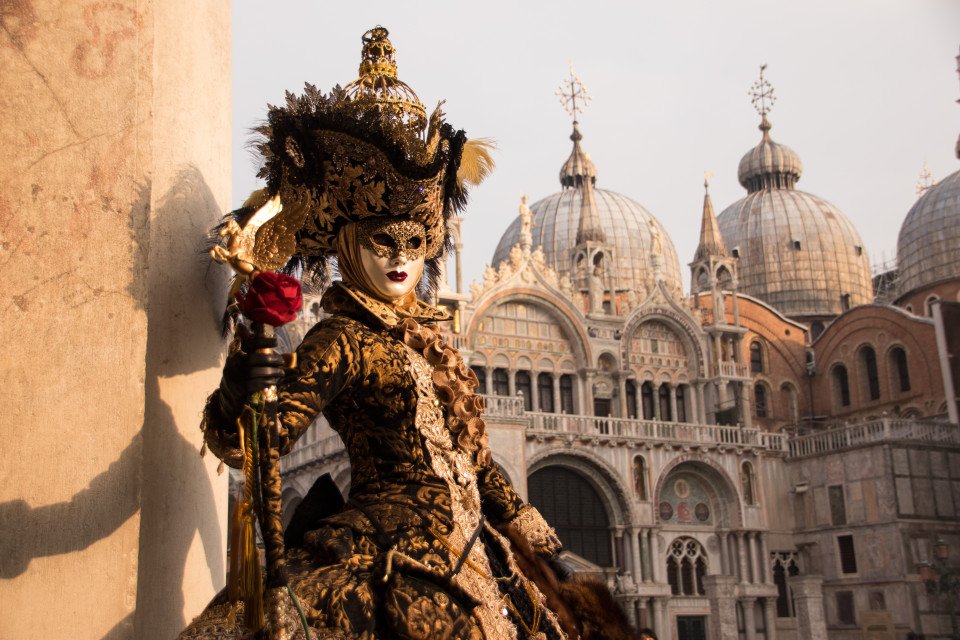
Venice

Venice
*This holiday is generally suitable for persons with reduced mobility. For customers with reduced mobility or any medical condition that may require special assistance or arrangements to be made, please notify your Cruise Concierge at the time of your enquiry, so that we can provide specific information as to the suitability of the holiday, as well as make suitable arrangements with the Holiday Provider on your behalf.
What's Included with
AE Expeditions
From the start, AE Expeditions was destined to be different. Our passion for adventure, exploring wild places and sharing the experience with friends burns just as brightly as it did 30 years ago, as does our preference for small-group, personal expeditions.
Explore Douglas Mawson


Dining room
One of the most important parts of any expedition is the food! Whatever adventures the day holds, you will be fuelled-up with hearty meals and delicious morning/afternoon teas cooked by our onboard chefs.
Meals are a great time to soak up the expedition camaraderie in our open seating dining area. Share stories with your fellow travellers and ask our expedition team questions that may have come up during the day.
Tea, coffee and snacks are available 24 hours a day, and our chefs offer different menu options and courses for each meal. Enjoy the range of house wine, beers and soft drinks included with dinner after a long day in the wild.
We also invite you to join your captain and expedition team for informal Captain’s Farewell drinks, with complimentary beverages and cocktail appetisers, followed by a 3 course meal.
Top Deck Restaurant
The Top Deck Restaurant is located on deck 8.




Activities
Whether it’s adventure at sea or on land that makes you tick, we have a huge range of optional activities to help you make the most of your time in some of the most beautiful places on earth.
We encourage you to make the most of every opportunity to nurture your inner adventurer. You can choose from a range of add-on adventures to make the most of your time in these beautiful places. We have pioneered more adventure activities than any polar expedition cruising company to help you explore in your own way.
We’ll get you out for your optional activities as often as possible, and this will be your main mode of exploration through your trip. Your guides* will assess the conditions at each landing, and you’ll have the option to join whenever conditions allow.
Optional activities are popular and group sizes are limited, so if you’re interested, get in touch with our team as soon as possible. Optional activities are listed on each itinerary page and additional fees apply.
Activities Platform
The Douglas Mawson features Zodiac access points and an activities platform, making boarding the Zodiacs as quick, efficient and safe as possible, minimising wait times and getting you closer to the action for longer.
Mudroom
Mudroom
No need to take your wet expedition gear back to your cabin to dry. Keep your cabin warm and cosy by leaving your outer jackets and pants in the mudroom.
The mudroom is your launchpad for all shore excursions and activities. Here, you will have access to a locker when you can hang your gear up to dry, and store your boots between excursions.
Lecture Theatre
On all expeditions you will meet naturalists and local specialists, who offer presentations on their area of expertise to enhance your appreciation of the destination you are exploring.
Join the team in the lecture theatre for presentations covering a broad range of topics to suit every interest, from history and culture to biology and climate change. Regardless of the topic, they all have one thing in common: they all aim to engage, educate, entertain and turn you into an ambassador for the planet.






Bars & Lounges
Communal meeting areas have always played a major role in fostering the warm camaraderie on board our ships. They are the heart of the expedition, where people meet to share tales from the day, swap photos, keep an eye out for wildlife and watch the sun go down.
The bars and lounges on board are refined yet inviting places to gather, with floor-to-ceiling windows offering stunning views, and of course friendly bartenders to shoot the breeze with.
Citizen Science Centre and Lounge
Learn more about the world and the unique destinations Aurora visits by visiting the onboard naturalist and Expedition Team in the world-class Citizen Science Center. You will be rewarded for your thirst for knowledge with one of the best views on the ship.
Library
With floor-to-ceiling windows, the library is a peaceful sanctuary where you can find non-fiction books to read up on the day’s destinations, use a public laptop to organise your photos or play board games with newfound friends.
Choose from our range of informative non-fiction titles, wildlife guidebooks, travel journals, novels and a selection of children’s books and board games.
Wildlife guides, books and binoculars can also be found on the observation lounge on Deck 7.
The Glass Atrium Lounge
As you explore the ship you will find indoor lounge areas with floor-to ceiling windows, and multiple open decks with expansive 270-360 degree views. The Glass Atrium Lounge inside the bow is a fantastic place to sit and watch for wildlife – with a drink in hand. There is no shortage of spaces to take in the majesty of the incredible world outside!
Atrium
More information coming soon.
Sun Deck & Pool
In between landings, enjoy access to the onboard gym or unwind in the sauna. Or head to the back deck to swim in the heated outdoor pool, enjoy a drink at the pool bar, or soak in one of two Jacuzzis, watching the world go by.


Jacuzzis
There are two Jacuzzis on the top outside deck which offer amazing views of the world outside.
Gym & Sauna
During your voyage, enjoy complimentary access to the gym or visit our sauna, which we highly recommend after the Polar Plunge!
Deck 8

- Seating area
- Observation lounge
- Top-deck restaurant
- Bar
- Observation decks
- Elevator

Deck 7

- Gym
- Sauna
- Seating area
- Observation decks
- Swimming pool and sun deck
- Jacuzzis
- Bridge
- Elevator
- Junior Suite
- Aurora Stateroom Superior
- Aurora Stateroom Superior Single

Deck 6

- Library
- Upper glass atrium lounge
- Elevator
- Balcony Stateroom Superior
- Balcony Stateroom (A, B, C)
- Junior Suite

Deck 5

- Lecture room & lounge
- Assembly station
- Reception
- Ship shop
- Dining room
- Bar
- Lower glass atrium lounge
- Elevator
- Citizen Science centre

Deck 4

- Elevator
- Main entrance
- Expedition desk
- Captain's Suite
- Balcony Stateroom Superior
- Balcony Stateroom (A, B, C)

Deck 3

- Change room/mudroom
- Zodiac access points
- Activity launching platform
- Medical clinic
- Elevator
- Aurora Stateroom Triple
- Aurora Stateroom Twin
- Aurora Stateroom Superior Single
- Aurora Stateroom Single





Aurora Stateroom Twin
Cabin size: 15.37m² - 15.97m² (165.4ft² - 171.9ft²)
The Douglas Mawson features two Aurora Stateroom Twin cabins featuring windows, all with private en-suites. Located on Deck 3, they're close to the mudroom and loading platforms, perfect for adventurers who are looking for a comfortable base that's close to the action.
- King or twin bed
- Private en-suite
- Porthole window
- Closet space
- Room safe
- Mini bar*
- Desk area
- Room-controlled thermostat
- 42" flat-screen TV
- 1 x 3-in-1 polar jacket per person (polar voyages only)
*Please note mini bar items are chargeable in all cabins except Junior Suite and Captain’s Suite
FLOORPLANS

Facilities
- King or Twin Configuration
- Vanity Area
- Shower
- Toiletries Provided
- TV
- Safe
- Desk
- Mini Bar (Additional Cost)
- Dining Area
- Hair Dryer
- Telephone
- Air Conditioning
Aurora Stateroom Triple
Cabin size: 22.57m2 (242.9ft2)
There are two Aurora Stateroom Triple cabins featuring portholes, both with private en-suites. Located on Deck 3, they're close to the mudroom and loading platforms.
- King or twin bed
- Private en-suite
- Porthole window
- Closet space
- Room safe
- Mini bar*
- Desk area
- Room-controlled thermostat
- 42" flat-screen TV
- 1 x 3-in-1 polar jacket per person (polar voyages only)
*Please note mini bar items are chargeable in all cabins except Junior Suite and Captain’s Suite
FLOORPLANS

Facilities
- One Single Bed
- King or Twin Configuration
- Vanity Area
- Shower
- Toiletries Provided
- TV
- Safe
- Desk
- Mini Bar (Additional Cost)
- Hair Dryer
- Telephone
- Air Conditioning
Aurora Stateroom Superior Single
Deck 3 Cabin size: 15.18m2 (163.4ft2)
Deck 7 Cabin size: 10.97m2 (118.1ft2 )
There are four Aurora Stateroom Superior Single cabins featuring portholes, all with private en-suites. Located on Decks 3 & 7.
- Single bed
- Private en-suite
- Closet space
- Room safe
- Mini bar*
- Porthole window
- Room-controlled thermostat
- 42" flat-screen TV
- 1x 3-in-1 polar jacket per person (polar voyages only)
*Please note mini bar items are chargeable in all cabins except Junior Suite and Captain's Suite
FLOORPLANS

Facilities
- One Single Bed
- Vanity Area
- Shower
- Toiletries Provided
- TV
- Safe
- Desk
- Mini Bar (Additional Cost)
- Hair Dryer
- Telephone
- Air Conditioning
Aurora Stateroom Single
Cabin size: 9.85m2 (106ft2)
There are two Aurora Stateroom Single cabins featuring portholes, all with private en-suites. Located on Deck 3, they're close to the mudroom and loading platforms.
- Single bed
- Private en-suite
- Closet space
- Room safe
- Mini bar*
- Porthole window
- Room-controlled thermostat
- 42" flat-screen TV
- 1x 3-in-1 polar jacket per person (polar voyages only)
*Please note mini bar items are chargeable in all cabins except Junior Suite and Captain's Suite
FLOORPLANS

Facilities
- One Single Bed
- Vanity Area
- Toiletries Provided
- TV
- Safe
- Desk
- Mini Bar (Additional Cost)
- Hair Dryer
- Telephone
- Air Conditioning





Balcony Stateroom Superior
Cabin & balcony combined size: 27.77m2 - 36.27m2 (298.9ft2 - 390.4ft2)
With a bit more room to stretch the legs, the Balcony Stateroom Superior cabins are perfect for polar adventurers who travel with plenty of gear.
Located on Deck 4 and 6, the Staterooms feature floor to ceiling windows, en-suite bathrooms and a comfortable desk area.
Some of these rooms are equipped with wheelchair accessible bathrooms.
- Deck 4 & 6
- King or twin beds
- Private en-suite (wheelchair accessible available)
- Full size window
- Closet space
- Room safe
- Mini bar*
- Private balcony
- Desk area
- Room-controlled thermostat
- 42" flat-screen TV
- 1 x 3-in-1 polar jacket per person (polar voyages only)
- Some of these rooms are equipped with wheelchair accessible bathrooms.
- *Please note mini bar items are chargeable in all cabins except Junior Suite and Captain’s Suite
FLOORPLANS

Facilities
- King or Twin Configuration
- Vanity Area
- Shower
- Toiletries Provided
- TV
- Safe
- Desk
- Mini Bar (Additional Cost)
- Hair Dryer
- Telephone
- Air Conditioning
Balcony Stateroom Category A
Cabin & balcony combined size: 21.07m2 - 26.77m2 (226.8ft² - 288.2ft2)
We have three cabin categories of our Balcony Staterooms. These are classified as A, B or C depending on the cabin size.
Our 25 Balcony Stateroom – A cabins are our premium cabin, and the most abundant on board. These cabins are located in preferred positions on Deck 4 and 6 which provides easy access between Decks via the internal stairs or elevator.
- King or twin bed
- Private en-suite
- Full size window
- Closet space
- Room safe
- Mini bar*
- Private balcony
- Desk area
- Room-controlled thermostat
- 42" flat-screen TV
- 1 x 3-in-1 polar jacket per person (polar voyages only)
FLOORPLANS

Facilities
- King or Twin Configuration
- Vanity Area
- Shower
- Toiletries Provided
- TV
- Safe
- Desk
- Mini Bar (Additional Cost)
- Lounge Area
- Hair Dryer
- Telephone
- Air Conditioning
Balcony Stateroom Category B
Cabin & balcony combined size: 21.07m2 - 26.77m2 (226.8ft² - 288.2ft2)
We have three cabin categories of our Balcony Staterooms. These are classified as A, B or C depending on the cabin size.
Our 17 Balcony Stateroom – B Cabins are our standard cabin, many fitted with interconnecting features making them great for families or groups. These cabins are located at the fore and aft of Deck 4 and 6.
- King or twin bed
- Private en-suite
- Full size window
- Closet space
- Room safe
- Mini bar*
- Private balcony
- Desk area
- Room-controlled thermostat
- 42" flat-screen TV
- 1 x 3-in-1 polar jacket per person (polar voyages only)
*Please note mini bar items are chargeable in all cabins except Junior Suite and Captain’s Suite
FLOORPLANS

Facilities
- King or Twin Configuration
- Vanity Area
- Shower
- Toiletries Provided
- TV
- Safe
- Desk
- Mini Bar (Additional Cost)
- Lounge Area
- Hair Dryer
- Telephone
- Air Conditioning
Balcony Stateroom Category C
Cabin & balcony combined size: 21.07m2 - 26.77m2 (226.8ft² - 288.2ft2)
We have three cabin categories of our Balcony Staterooms. These are classified as A, B or C depending on the cabin size.
Our 15 Balcony Stateroom Category C cabins are our most economical, fitted with all the necessities and comfortable for up to 2 people. These cabins are scattered throughout Deck 4 & 6.
- King or twin bed
- Private en-suite
- Full size window
- Closet space
- Room safe
- Mini bar*
- Private balcony
- Desk area
- Room-controlled thermostat
- 42" flat-screen TV
- 1 x 3-in-1 polar jacket per person (polar voyages only)
*Please note mini bar items are chargeable in all cabins except Junior Suite and Captain’s Suite
FLOORPLANS

Facilities
- King or Twin Configuration
- Vanity Area
- Shower
- Toiletries Provided
- TV
- Safe
- Desk
- Mini Bar (Additional Cost)
- Hair Dryer
- Telephone
- Air Conditioning
Aurora Stateroom Superior
Cabin size: 13.97m2 - 16.17m2 (150.4ft2 - 174.1ft2)
With a bit more room to stretch the legs, the Aurora Stateroom Superior are perfect for polar adventurers who travel with plenty of gear.
Located on Deck 7, the Staterooms feature french balconies, floor to ceiling windows, en-suite bathrooms and a comfortable desk area.
- King or twin bed
- Private en-suite
- French balcony
- Closet space
- Room safe
- Mini bar*
- Desk area
- Room-controlled thermostat
- 42" flat-screen TV
- 1 x 3-in-1 polar jacket per person (polar voyages only)
*Please note mini bar items are chargeable in all cabins except Junior Suite and Captain’s Suite
FLOORPLANS

Facilities
- King or Twin Configuration
- Vanity Area
- Shower
- Toiletries Provided
- TV
- Safe
- Desk
- Mini Bar (Additional Cost)
- Lounge Area
- Hair Dryer
- Telephone
- Air Conditioning


Captain's Suite
The largest of all our rooms, the singular Captain's Suite will take you to the polar regions in ultimate style and comfort. Complete with large lounge area, balcony, walk-in wardrobe and en-suite, you'll need to get in early to secure this suite.
- Deck 4
- King or Twin beds
- Private en-suite
- Full size window
- Desk area
- Room-controlled thermostat
- 42" flat-screen TV
- Private balcony
- Separate lounge area
- Closet space
- Room safe
- 1 x 3-in-1 polar jacket per person (polar voyages only)
- 1 x free pair of binoculars per suite
- Free stocked mini bar
- 1 x free bottle of champagne per suite
FLOORPLANS

Facilities
- King or Twin Configuration
- Lounge Area
- Vanity Area
- Shower
- Toiletries Provided
- Suite Benefits
- Free Mini Bar
- TV
- Safe
- Hair Dryer
- Telephone
- Desk
- Air Conditioning
Junior Suite
Cabin & balcony combined size: Up to 41.47m2 - 41.87m2 (446.4ft2 - 450.7ft2)
The four Junior Suites take in some impressive scenery from their vantage points on Deck 7. When you aren't enjoying a landing, you can relax in the suites' separate lounge area, or just watch the world float by from the private balcony.
- Deck 7
- King or twin beds
- Private en-suite
- Full size window
- Desk area
- Room-controlled thermostat
- 42" flat-screen TV
- Private balcony
- Separate lounge area
- Closet space
- Room safe
- 1 x 3-in-1 polar jacket per person (polar voyages only)
- 1 x free pair of binoculars per suite
- Free stocked mini bar (stocked once only, not replenished)
- 1 x free bottle of champagne per suite
FLOORPLANS

Facilities
- King or Twin Configuration
- Lounge Area
- Vanity Area
- Shower
- Toiletries Provided
- Suite Benefits
- TV
- Safe
- Hair Dryer
- Telephone
- Desk
- Air Conditioning


-large_thumb.jpg)





-large_thumb.jpg)